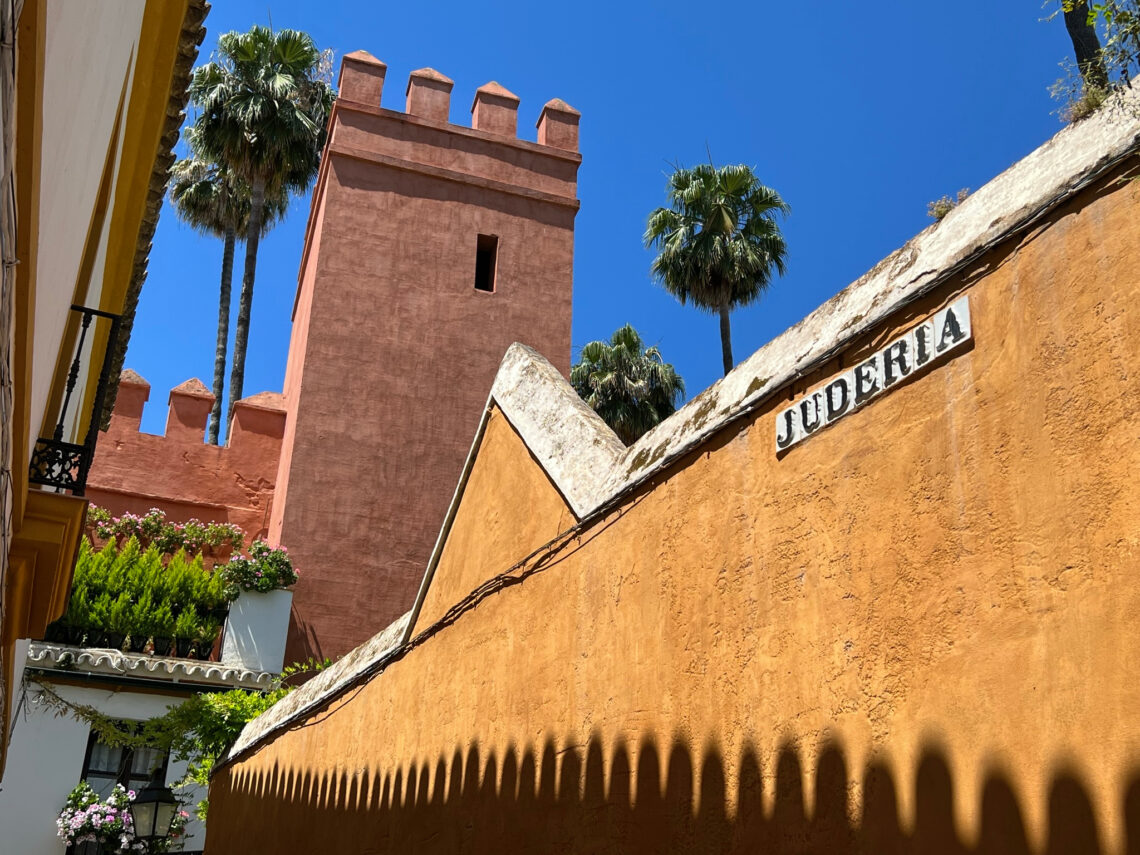
Seville, Spain
After spending several days in Seville last May, I very quickly understood why people so easily fall in love with this place. As the seat and one of the oldest and most important cities in Andalusia, Seville oozes historic charm from its narrow, cobblestone streets dotted with orange trees and elegant plazas ringed with Moorish-inspired palaces and palatial churches. It has a reputable food scene, with a mix of innovative and classic tapas bars on just about every corner serving delectable nibbles and potables at all hours of the day. And, the weather is glorious and balmy, with very little humidity and some of the bluest skies I have ever seen.
Charles and I had arrived by train via Madrid. The train experience in and of itself was impressive – a 300-mile journey achieved in two-and-a-half hours, thanks to Spain’s elaborate high-speed rail system. From the window seat of a very comfortable deluxe coach, I watched mountains and valleys whiz by, all covered in olive groves with the occasional crumbling stone bastion or bulwark from days of yore. We departed Madrid’s Puerta de Atocha promptly at noon, and without fail, pulled into Seville’s Santa Justa station at 14:30. We could’ve walked to our hotel, but with all our bags in tow, a taxi made more sense.
We were dropped off in front of an austere building with caged windows and two huge wooden doors studded with metal bolt heads. From the outside, it looked like we were staying in a dungeon. However, just on the other side of those doors was an Andalusian paradise: a sumptuous and verdant marble-tiled courtyard with a trickling fountain at its center surrounded by a two-story double-columned arcade. We later learned this was very typical of Moorish-influenced design – spartan on the outside, surprisingly beautiful on the inside.
Hotel Palacio Villapanés, a CoolRooms property, was originally commissioned in the 18th century as a palace home for an Andalusian marquis, who was also the lieutenant general of the royal navy. In December 2009, it gained protective status as a Sevillian cultural heritage site. So many of the building’s historic baroque details have been maintained, while blending harmoniously with contemporary updates throughout. Charles and I stayed in a luxurious split-level suite, which wrapped around its own mini patio with accordion windows to let the cool air in at night. A well-appointed living room and bedroom flowed into a black marble bathroom with a soaking tub fit for a king, separate shower, and proper toilet room (I love that about Europe).
The hotel had another gloriously verdant space – a fully exposed back patio where we had breakfast in the mornings and aperitivos before dinner. The patio was bedecked with bitter orange trees and terracotta planters overflowing with asparagus fern and coral fountain bush. All around, the walls were rife with fragrant jasmine vines. The inner gardener in me wanted to deadhead the faded blooms, but I employed restraint. I also made use of the rooftop terrace and plunge pool, which had incredible views of the Sevillian skyline.
On our first afternoon, en route to grabbing a quick bite at a neighborhood brasería, Charles and I stumbled upon a dreamy scene – a church plaza filled with towering trees covered in lavender-hued flowers. These blooms, which had a sweet and distinct redolence, belonged to the jacaranda tree. I had heard of the jacaranda, but never seen one in full blossom. A native of South America, some species have two flowering cycles – first in the spring and again in the fall. We would later discover that the thoroughfares of Seville are lined with jacarandas – a welcoming festoon of trees dripping with purple petals, adding to the enchantment of the city.
We hired two guides to take us around. The first, a cheerfully demeanored gentleman who went by the nickname Paco, gave us a private tour of Seville’s trifecta: the Royal Alcázar, the Catedral de Sevilla, and the Giralda. The Royal Alcázar was a palace built for Pedro I, the King of Castile and León, who reigned in the mid-14th century. It was erected on the site of al-Mubarak, the official residence of the Almohad Caliphs, the sovereigns of the North African Berber Muslim empire that reigned over Andalusia until 1248, when they were overthrown by Ferdinand III and the Castilian army. Much of al-Mubarak was displaced when the Royal Alcázar was constructed, but some remains exist to this day.
Seville’s Alcázar is a shining example of Mudéjar style on the Iberian Peninsula, only second to the Alhambra in Granada. The Castilians were enamored with Muslim design, which is how the Mudéjar style came to be. It combines Romanesque, Gothic, and Renaissance structural elements with typical decorative techniques seen in Islamic architecture. These can include calligraphy, vegetal forms, intricate tilework, and Mocárabe, a form of ornamented vaulting. Even the word alcázar was influenced by the Muslims – it comes from the Arabic term al-qaṣr, which means “the palace.”
Paco gave us the “best of” tour of the Alcázar. Shortly after entering the palace complex, we were led to the Patio de las Doncellas, or the Maidens Courtyard. This is perhaps the most famous patio in the Alcázar, featuring a long narrow basin with four sides of archways characteristic of the Almohad dynasty, decorated with geometric compositions and Arabic epigraphy. A gallery surrounds the courtyard with walls covered in colorful tiles. This was Charles and my first exposure to Mudéjar design on our trip…and we were both floored by the beauty and intricacy of it all. Two other highlights from the tour were the Patio de las Muñecas (Dolls Courtyard), a stunning three-story courtyard with a luminescent crystal ceiling, and the Salón de Embajadores (Hall of Ambassadors), the king’s throne room, with a dazzling cedar dome sculpted with golden stars and mirror tiles.
From the Alcázar, we walked across the Plaza del Triunfo to the Catedral de Sevilla. At the time of its completion in the early 16th century, it was the largest cathedral in the world. Today it is number three…but still immense. As with many other churches throughout Andalusia, the Seville Cathedral was constructed on the site of a former Almohad mosque. Interestingly, directly after the city was reconquered by the Castilians, they “christianized” the mosque and used it as their religious sanctuary for over 150 years before it was decided to build a brand new, Gothic-style Catholic cathedral to officially replace it. During this time, the minaret of the mosque was also retrofitted as the cathedral’s bell tower and renamed La Giralda.
Paco led us through a side entrance of the cathedral’s Patio de los Naranjos (Courtyard of Orange Trees), which had a fountain at its center. This fountain dates back to the Almohad times when it was used by Muslim worshippers to wash their hands and feet before entering the mosque. Along with the Puerta del Perdon (Gate of Forgiveness), a stucco-engraved rounded archway that serves as the official entrance to the Patio de los Naranjos, these are some of the only remaining elements from the original Almohad mosque.
From the courtyard we entered the cathedral, and I was immediately struck by its sheer scale. The central nave, with its 140-foot soaring ceiling, is accompanied by 80 side chapels tucked into the perimeters of the church. The main altarpiece is staggering – 45 carved scenes from the life of Christ and over 200 figures, all covered in gleaming gold leaf. We followed Paco into the Sacrista Mayor, which houses the treasury. All around us, the wealth of the Catholic church was on display – gold and silver candelabra, gemstone-studded chalices, and ornate headdresses. Behind a glass cabinet, Paco pointed out the 22-carat gold crown of the Virgen de los Reyes, with a centerpiece angel whose torso is composed of one of the largest pearls in the world. A visit to the Seville Cathedral wouldn’t be complete without seeing the tomb of Christopher Columbus, which surprisingly, houses only 4.4 ounces of the explorer’s remains; the rest of his body lies un-exhumed in Santo Domingo, Dominican Republic.
Fortunately, the ticket that I had purchased months in advance granted us access to the 340-foot high Giralda, the majestic Mudéjar style belltower that incorporates numerous Almohad-era decorations from the days when it served as a minaret. Charles and I climbed the 35 ramps and 17 steps to the viewing balcony located directly below the pinnacle bell. Needless to say, the views from the top were awe-inspiringly amazing. I was surprised to see that Seville is primarily a pueblo blanco, a city of whitewashed buildings characteristic of smaller towns dotting the hillsides of Andalusia, which is not as evident walking the narrow streets below. On the way down, I stopped at various landings to peer out over the sea of Gothic spires that made up the roof of the cathedral.
The next day, our other guide, Margarita, met us at Palacio Villapanés and led us on a private tour through the Jewish Quarter, located in the Santa Cruz district of Seville. This area is filled with charming alleyways and shady courtyards, and at one time was home to the largest Jewish population in Spain. In 1248, when Ferdinand III reconquered the city from the Almohads, he gave this quarter, the closest residential neighborhood outside the palace walls, to the Jews. As Margarita explained, many Jewish men held important roles in the king’s court, and this was his way of expressing his gratitude – while also keeping the Jewish population closely monitored and contained. Santa Cruz remained inhabited by Sevillian Jews until 1492, when the Alhambra Decree led to the mass expulsion of non-Christians in Spain who refused to convert to Catholicism. In spite of its name, very few traces of Jewish life remain in the Jewish Quarter, except for a few street names and a rare Star of David etched into a frieze or an ancient doorway.
After exploring Santa Cruz with Margarita, on our own Charles and I visited Plaza de España, a baroque complex built for the Ibero-American Exposition of 1929. This celebrated site is well-known to many for its popularity in cinema, serving as a filming location for, among others, Lawrence of Arabia and Star Wars. In a huge semi-circular design the size of five football pitches, a palace-like building with a porticoed gallery wraps around a canal traversed by four embellished footbridges, one for each ancient kingdom of Spain. Abutting the gallery are 48 distinctive tiled alcoves representing the country’s array of provinces. The plaza is anchored by two ornate, wedding cake towers. The overall design was influenced by 1920s Art Deco but also contains hints of Spanish Renaissance and Baroque Revival and Neo-Mudéjar styles. We walked the full length of the plaza, stopping frequently to admire the end towers, which were framed ever-so perfectly in the archways of the portico.
It was a very hot day without a cloud in the sky, so we headed across the street to the Parque de María Luisa and sought refuge from the blazing midday sun. I left Charles on a bench in front of the lotus pond and went exploring. This little slice of Eden was also built for the 1929 Ibero-American Exposition and is filled with lush palms, Mediterranean pines, the ubiquitous orange trees of Seville, colossal figs, and charming water features and sitting areas, all (fortunately) in the shade. After aimlessly strolling, I stumbled upon a beautiful white pergola walkway covered in magenta bougainvillea and a whimsical fountain surrounded by frog statuettes. Despite the heat, I found the park incredibly refreshing.
In addition to some delectable tapas, we had two very memorable meals in Seville. The first was at Cañabota, a Michelin-starred “fishmonger” in the heart of the city. Our entire meal came from the sea, and much of it was cooked on an open grill in the exposed kitchen. I was surprised to learn that Seville is an inland port. Located on the Guadalquivir river, which empties into the Atlantic only 120 miles southwest of the city, fresh seafood is hauled into Seville daily. We let our waiter do the ordering and devoured every ostra, camarón, langostino, and filete de pescado placed in front of us – all meticulously plated.
The second memorable meal was arranged by our hotel. They booked us a table at conTenedor, an organic, slow food restaurant in Seville’s San Julian neighborhood. The vibe was friendly and funky, with an almost all-female staff. The evening’s menu is written out on a chalkboard and temporarily propped up on your table while you decide what to order. Everything we ate that evening was divine. I particularly remember a duck confit dish served over crispy rice with a mustard mushroom sauce and soy raspberry reduction. It sounds busy, but it was the perfect balance of sweet, salty, and savory. We finished the meal with a spectacular cherry liquor called crema de guindas, which was elegantly acidic and not overly sweet, with a slight bitter almond flavor.
Last visited in May, 2022




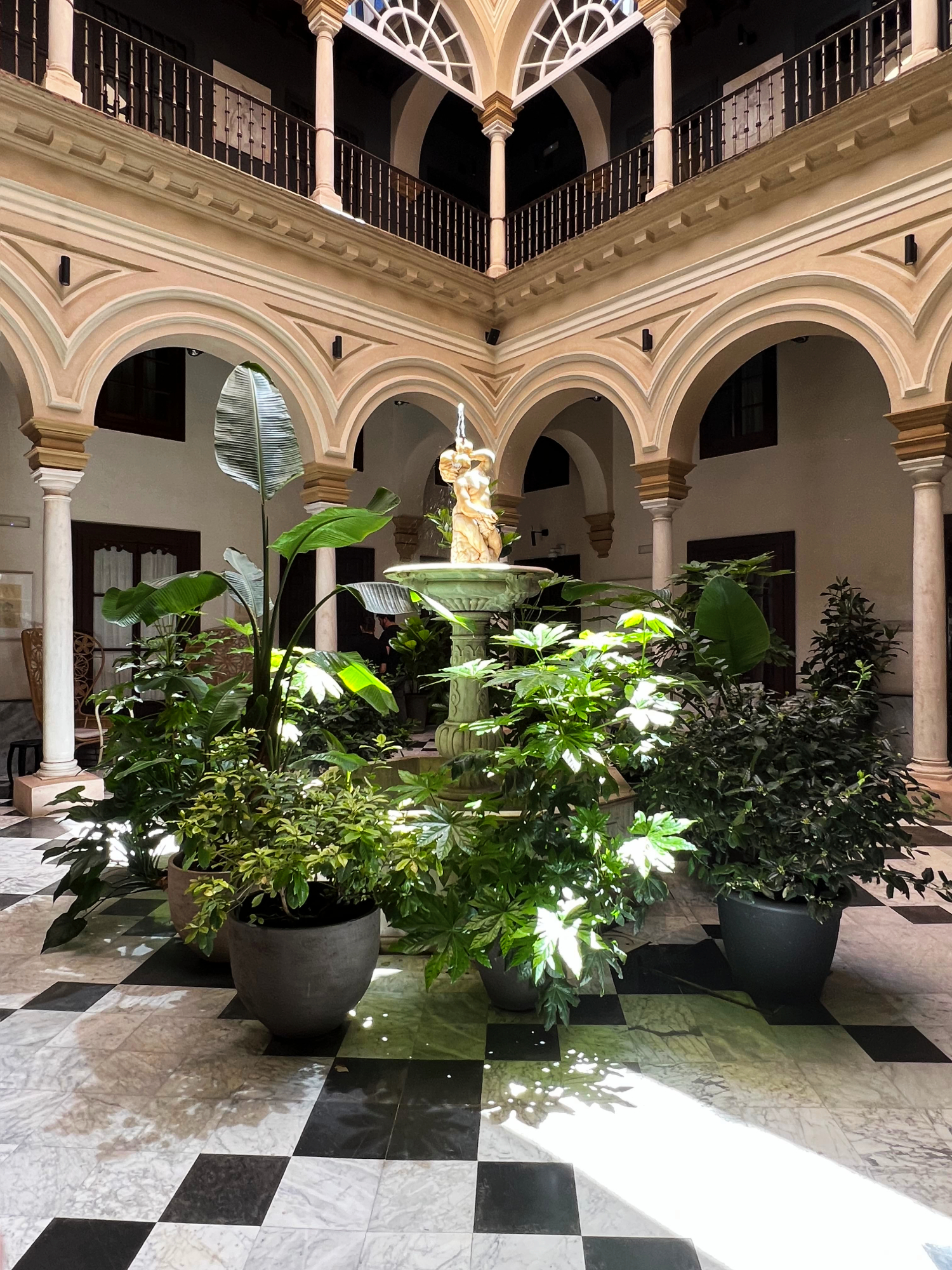
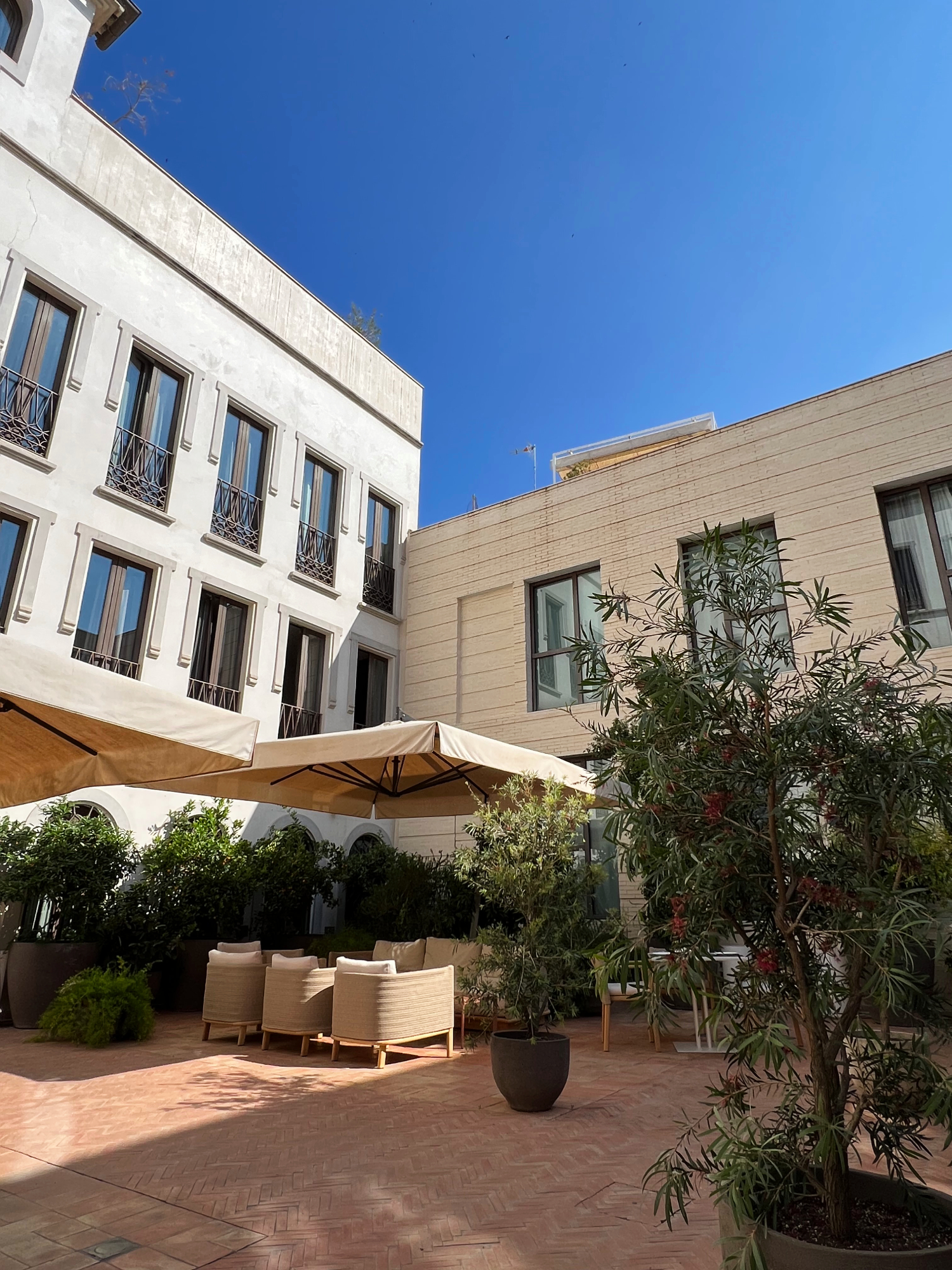
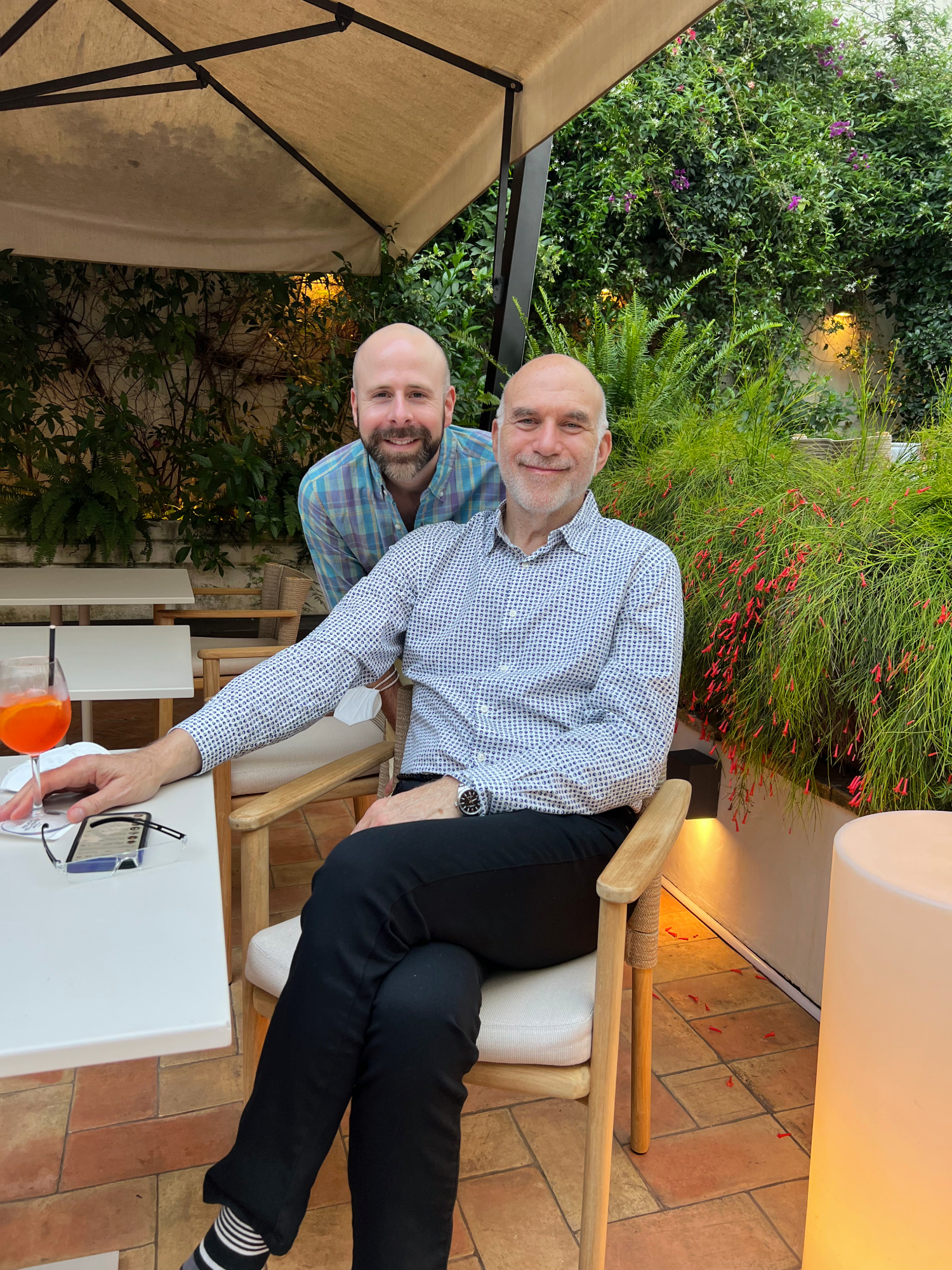
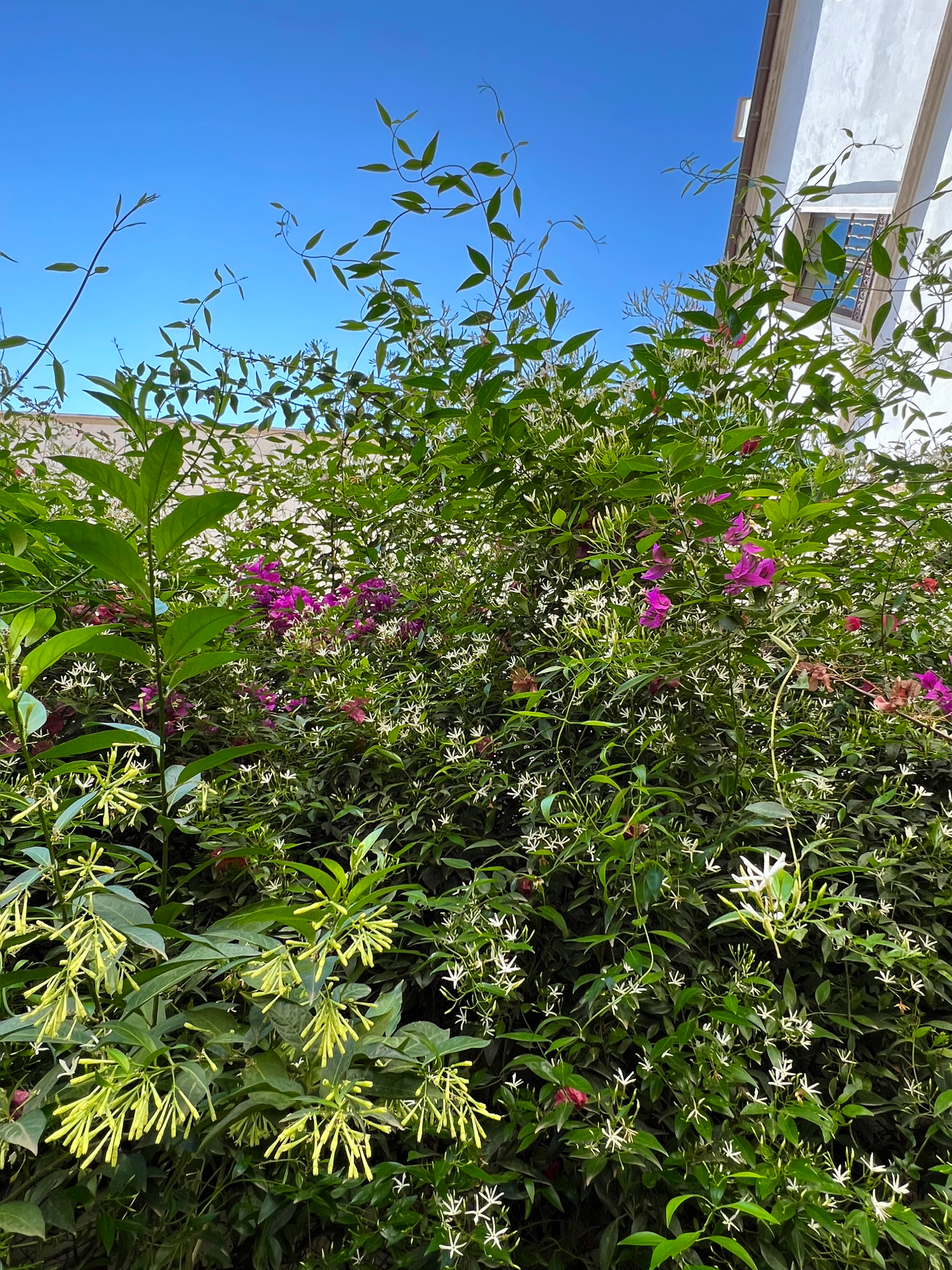
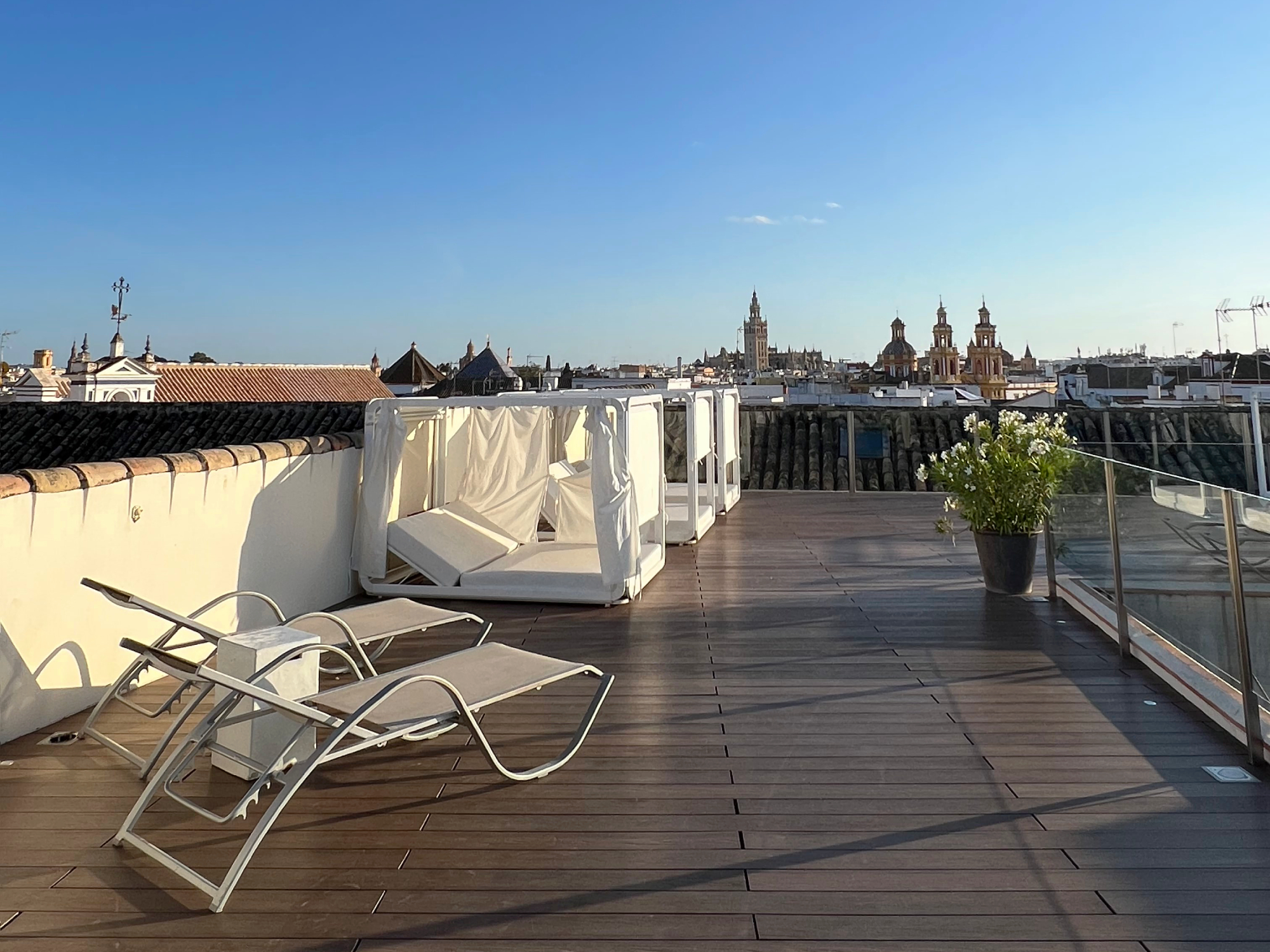
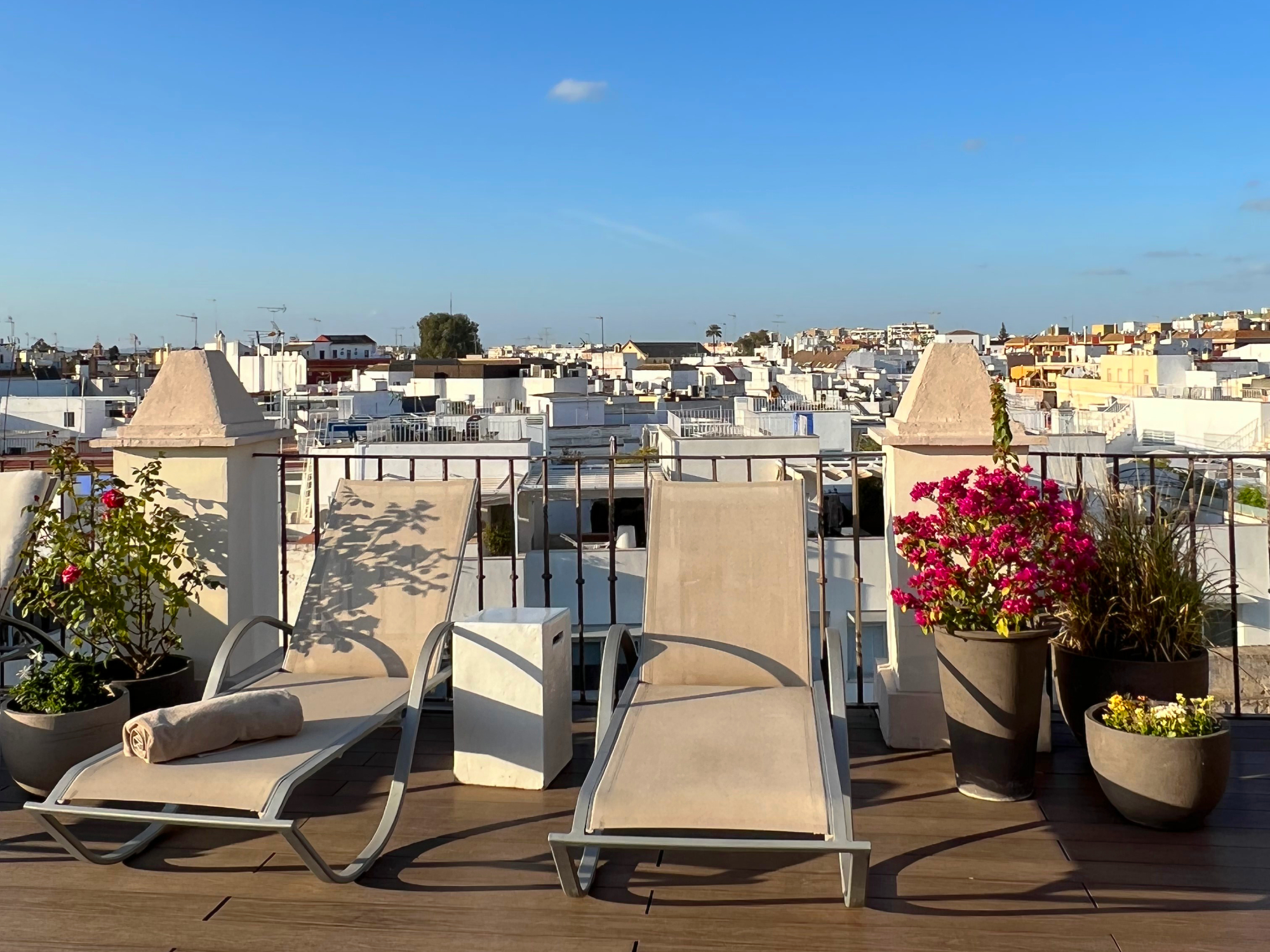
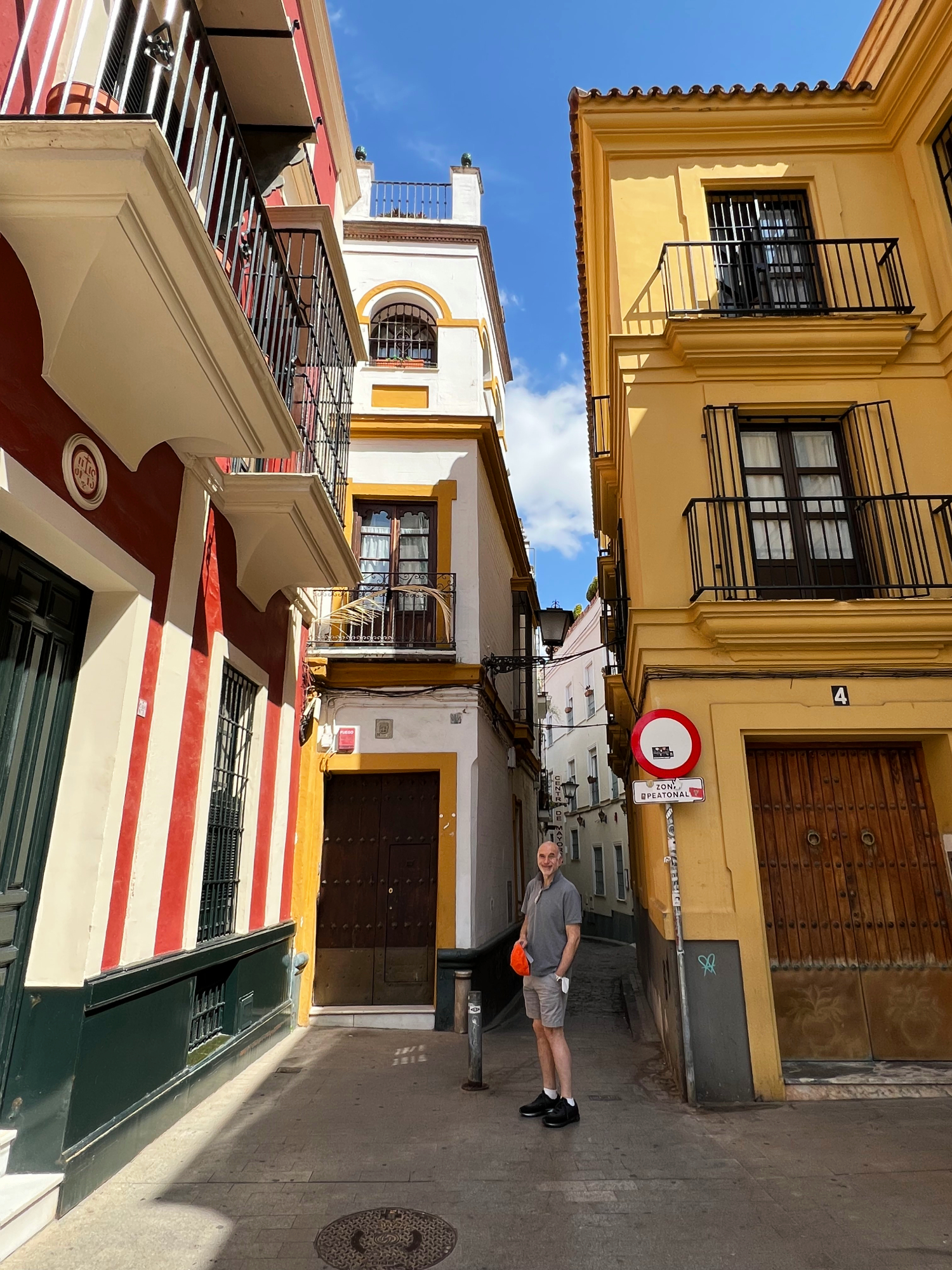
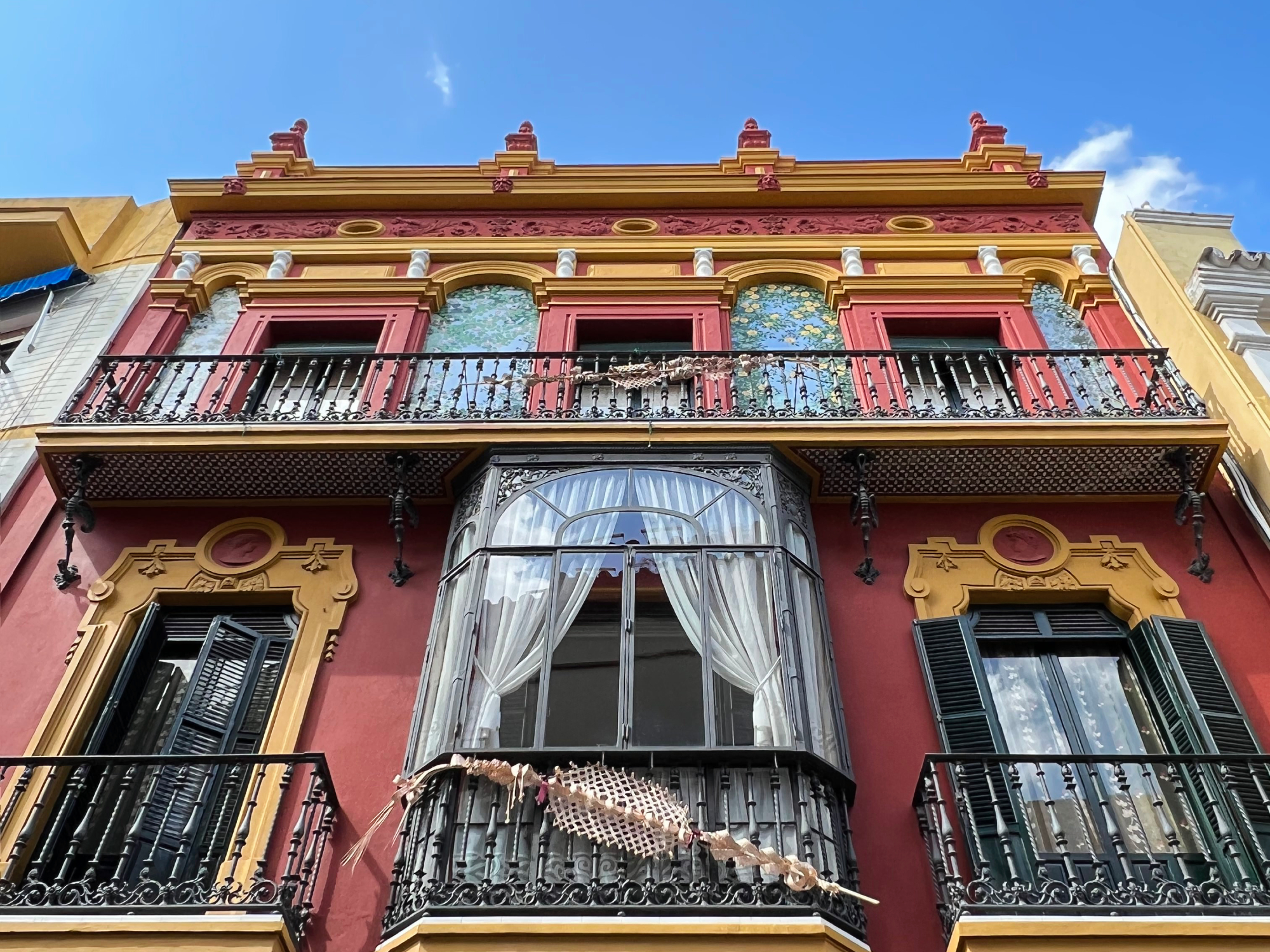
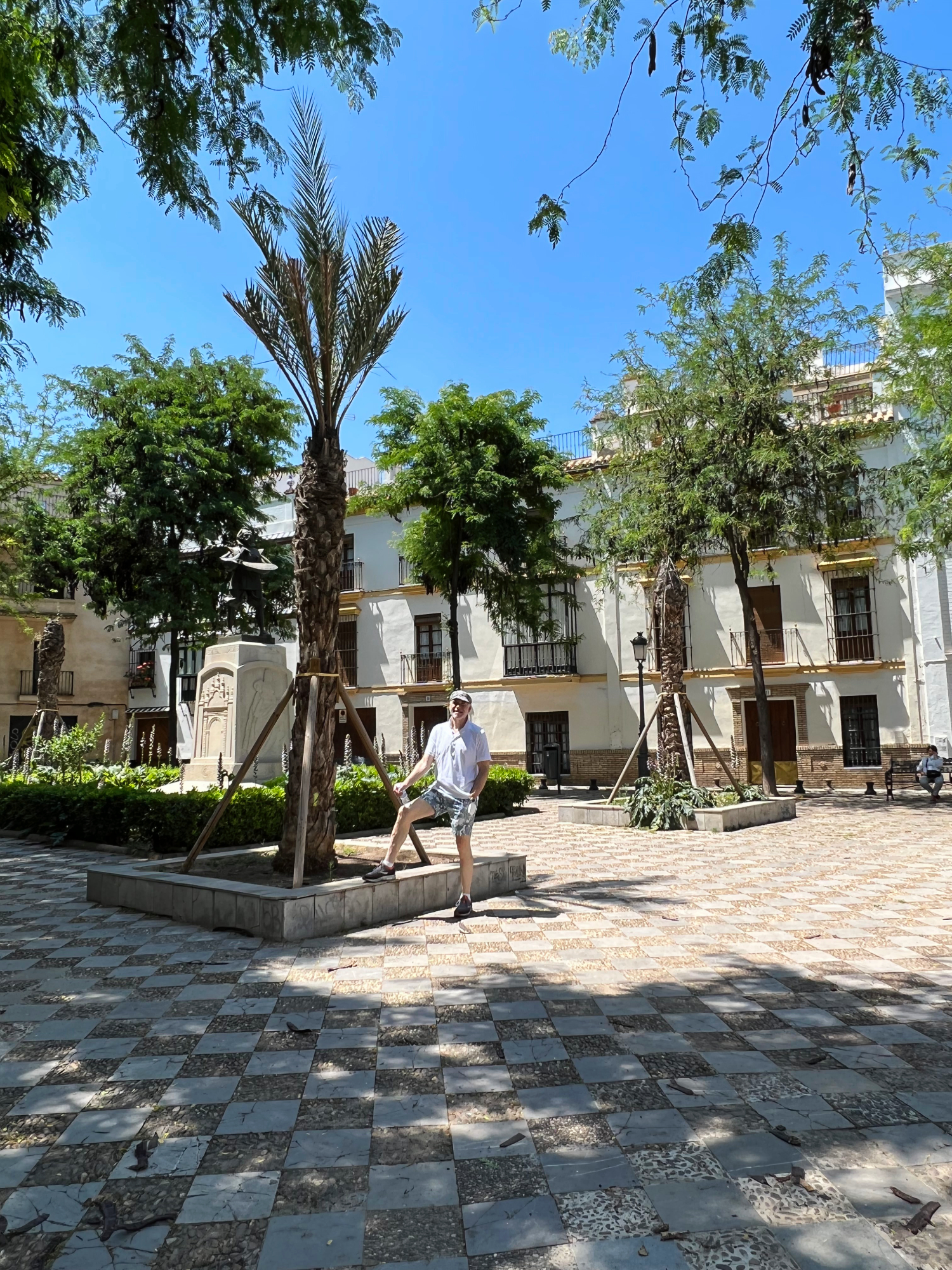
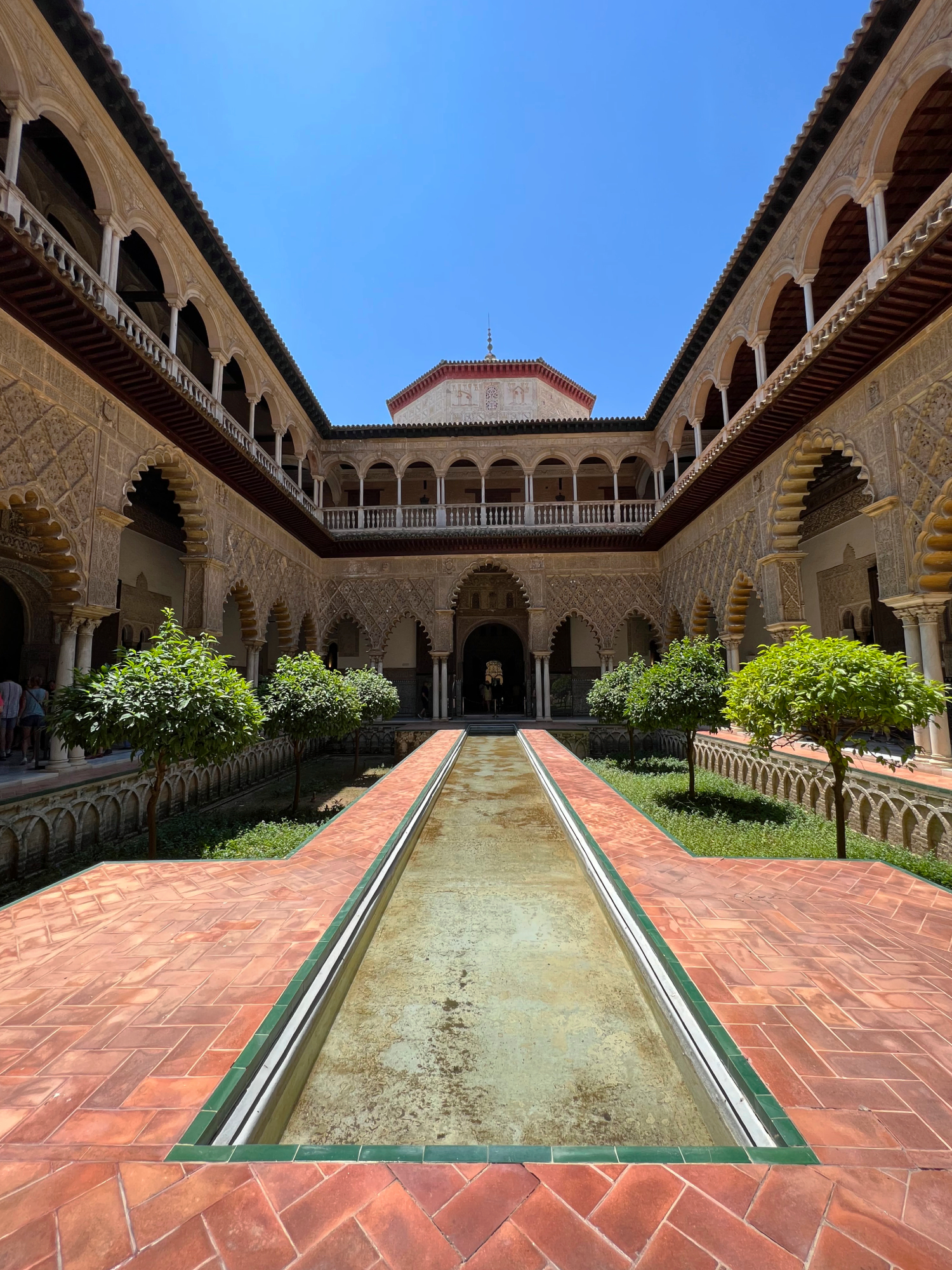
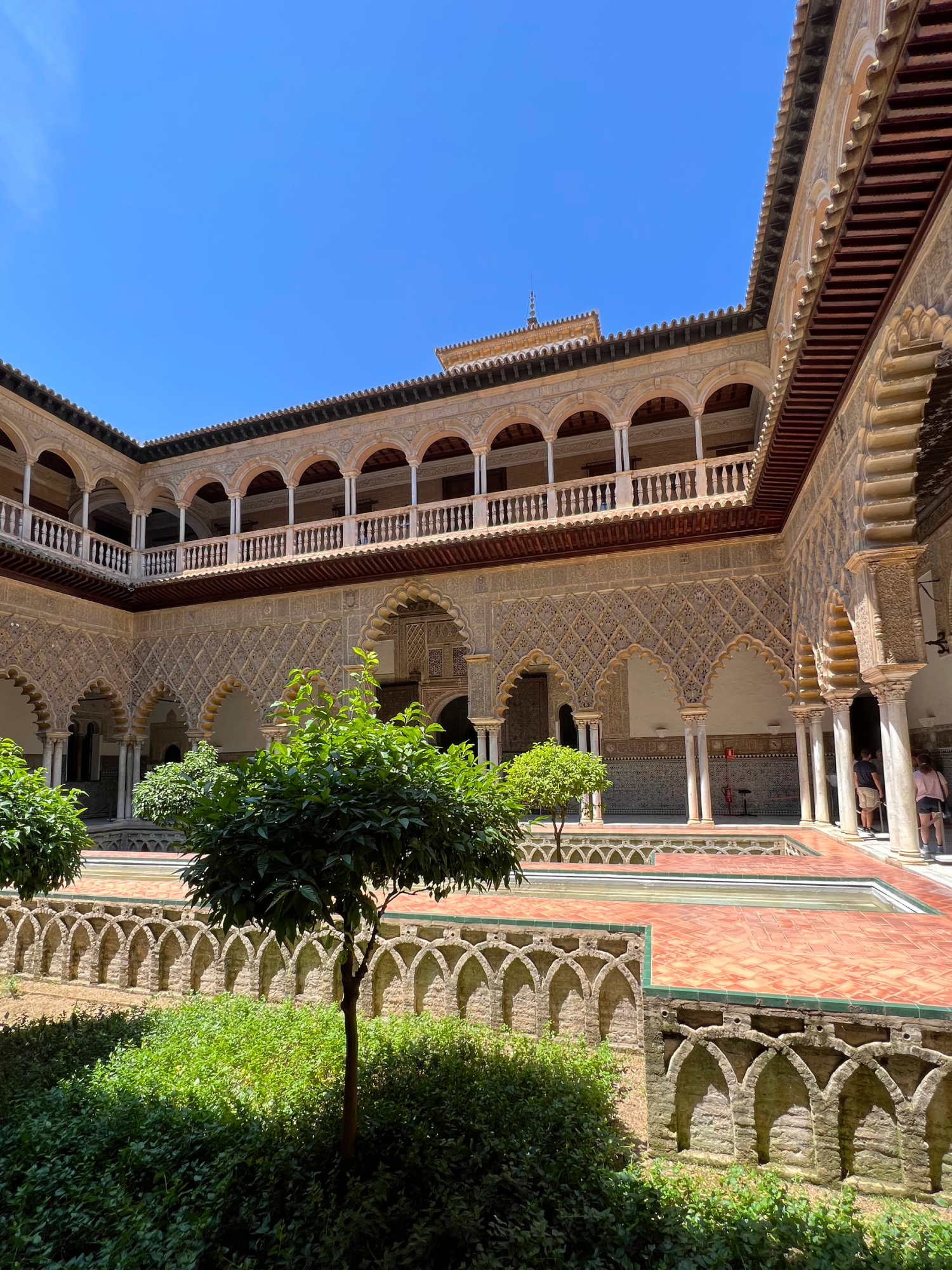
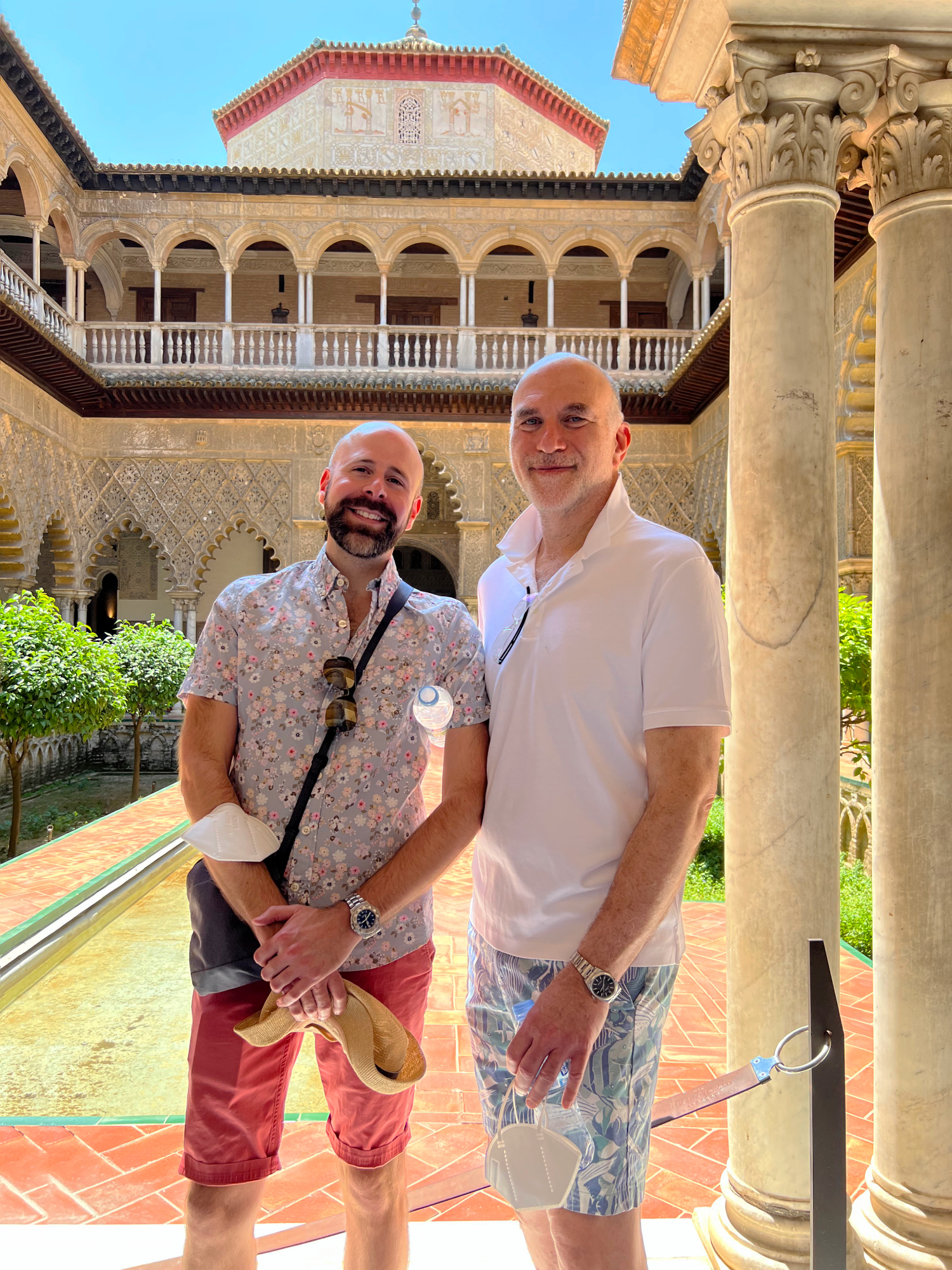
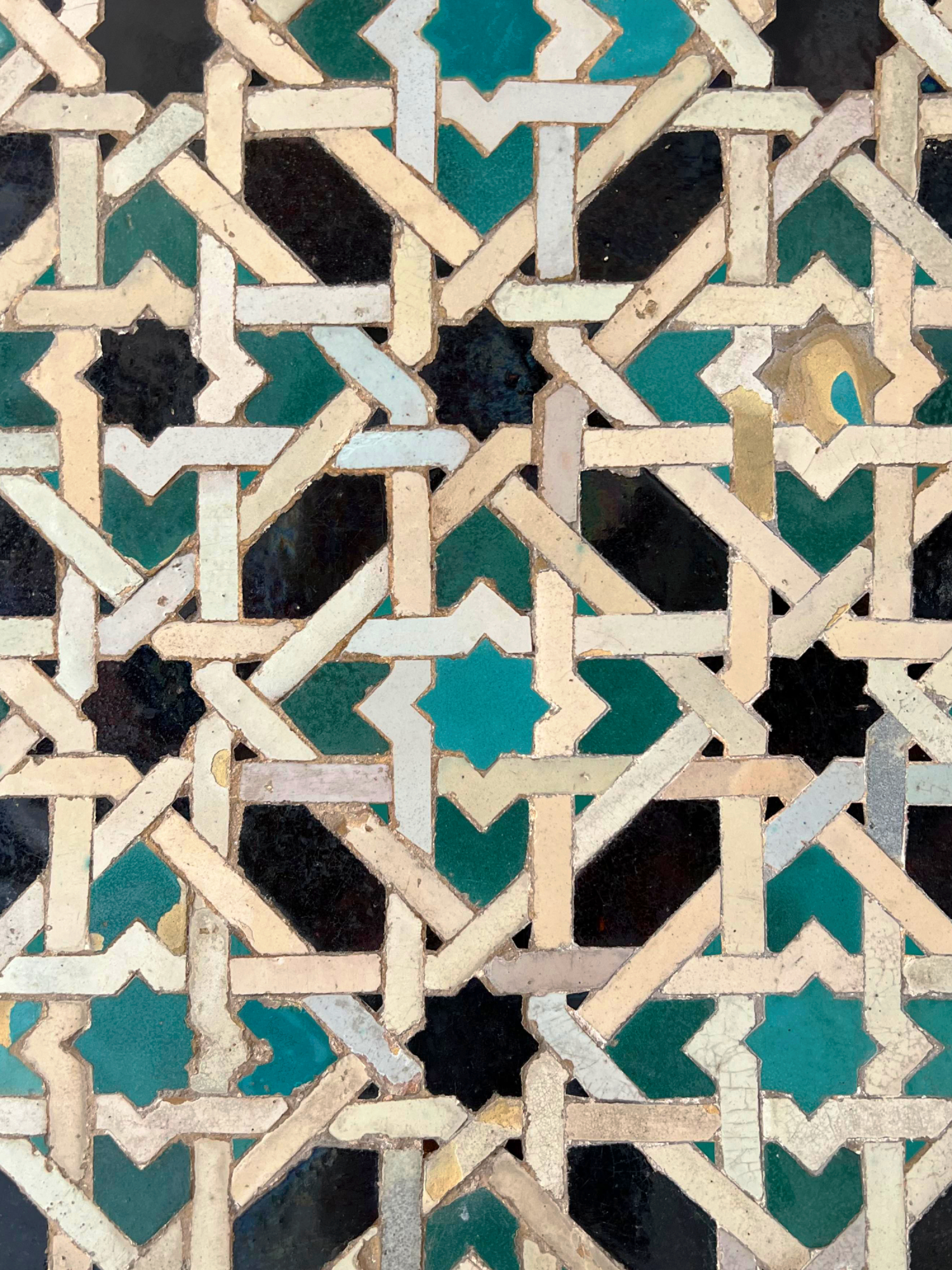
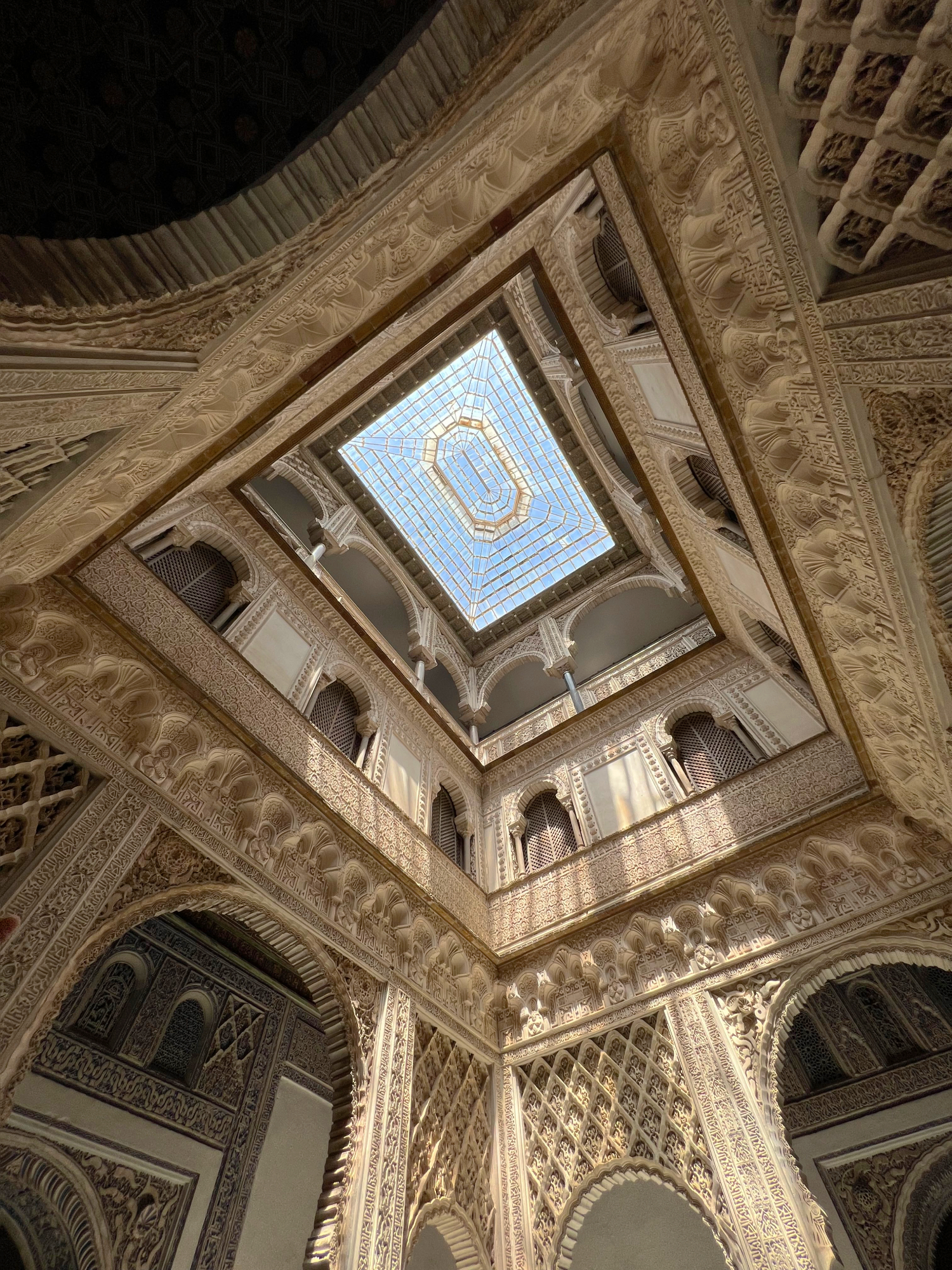
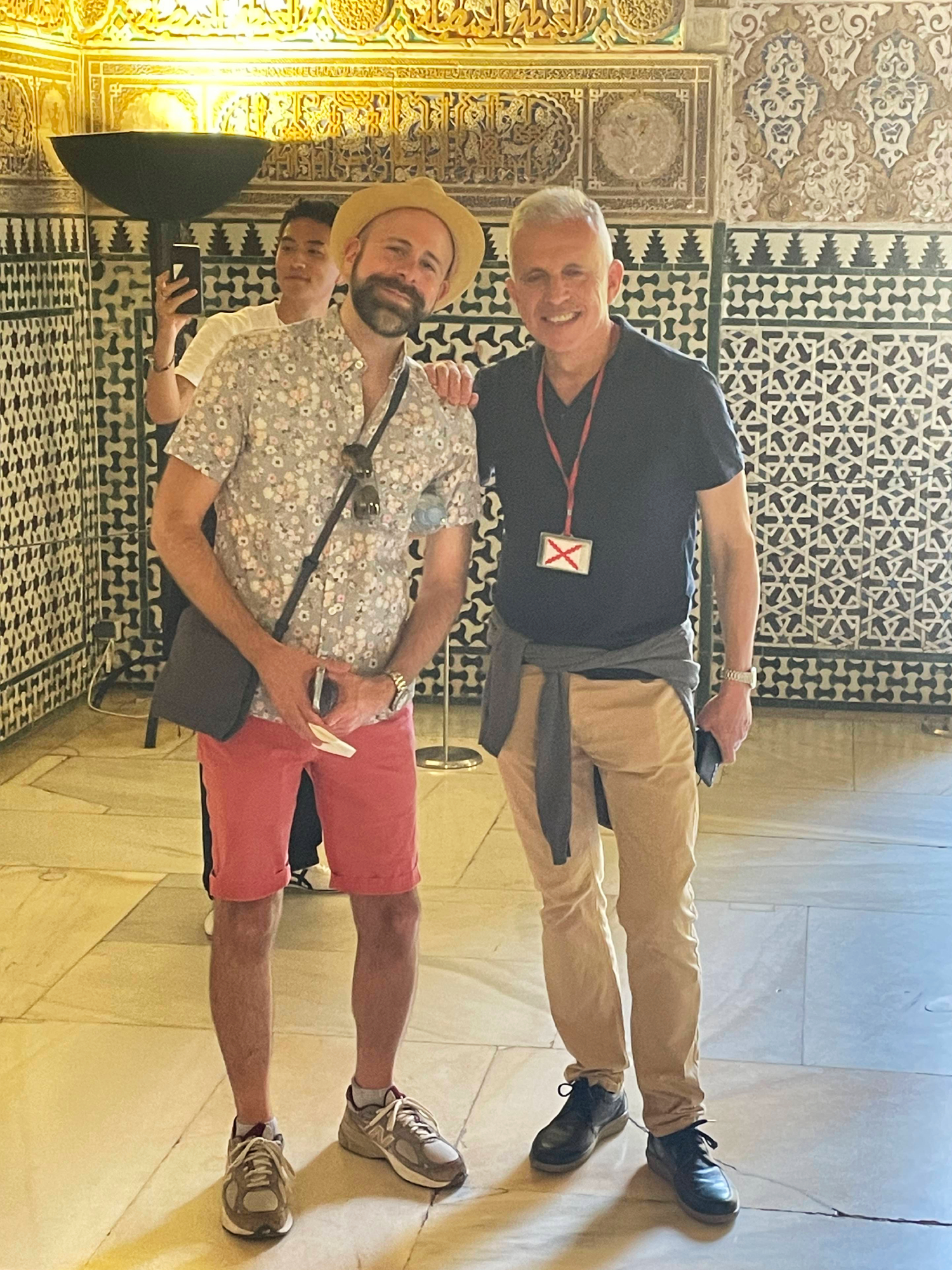
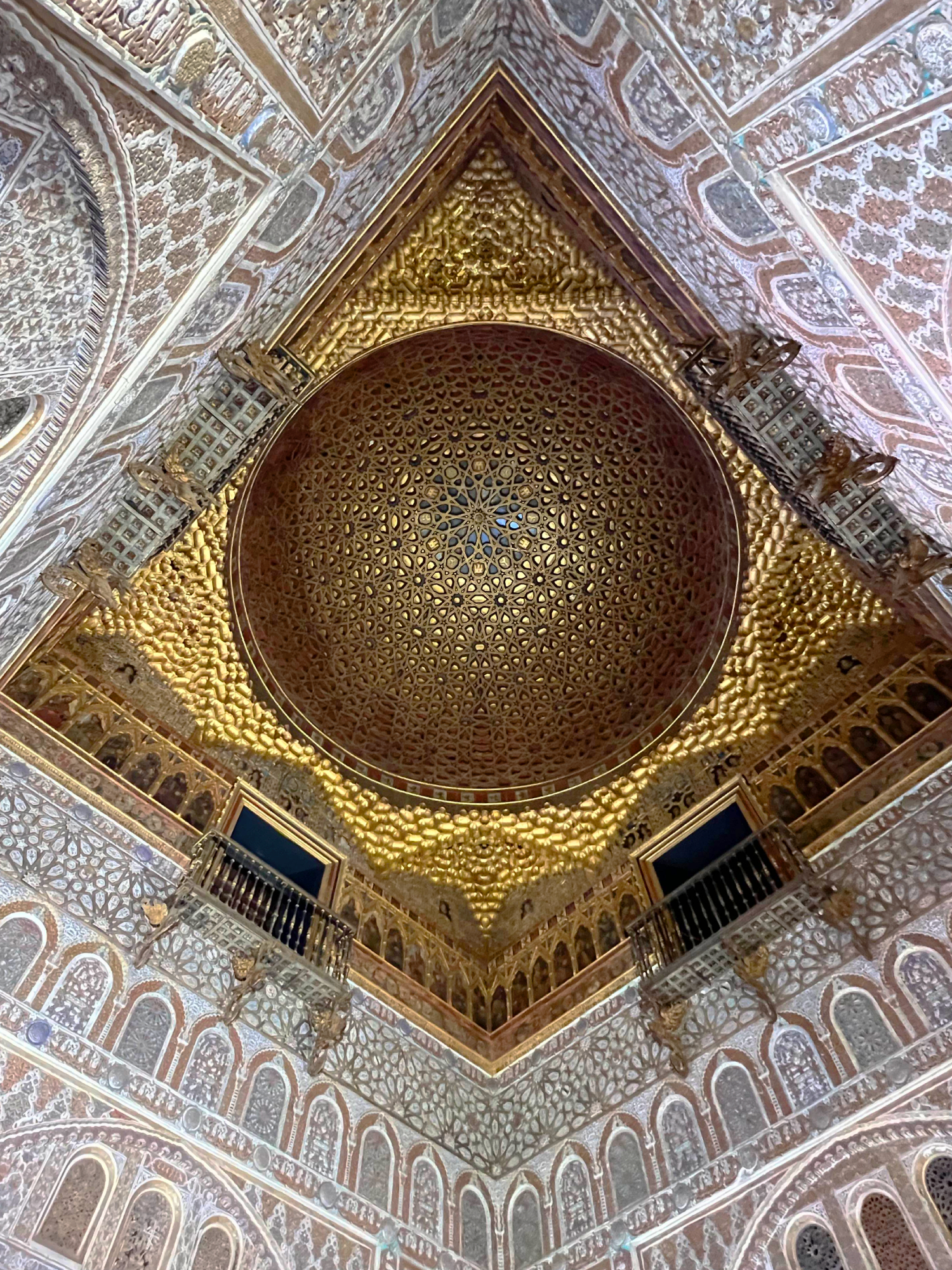
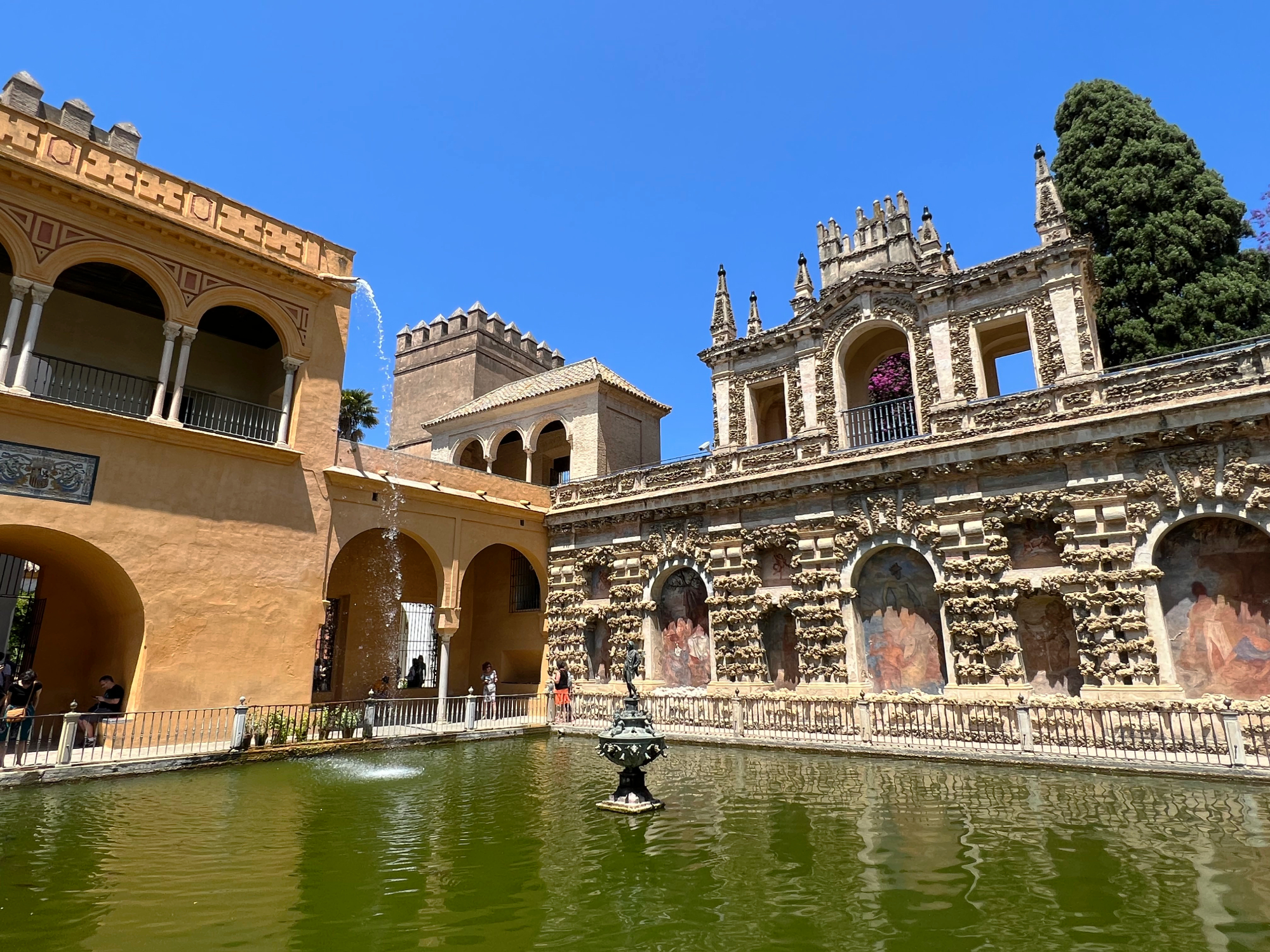
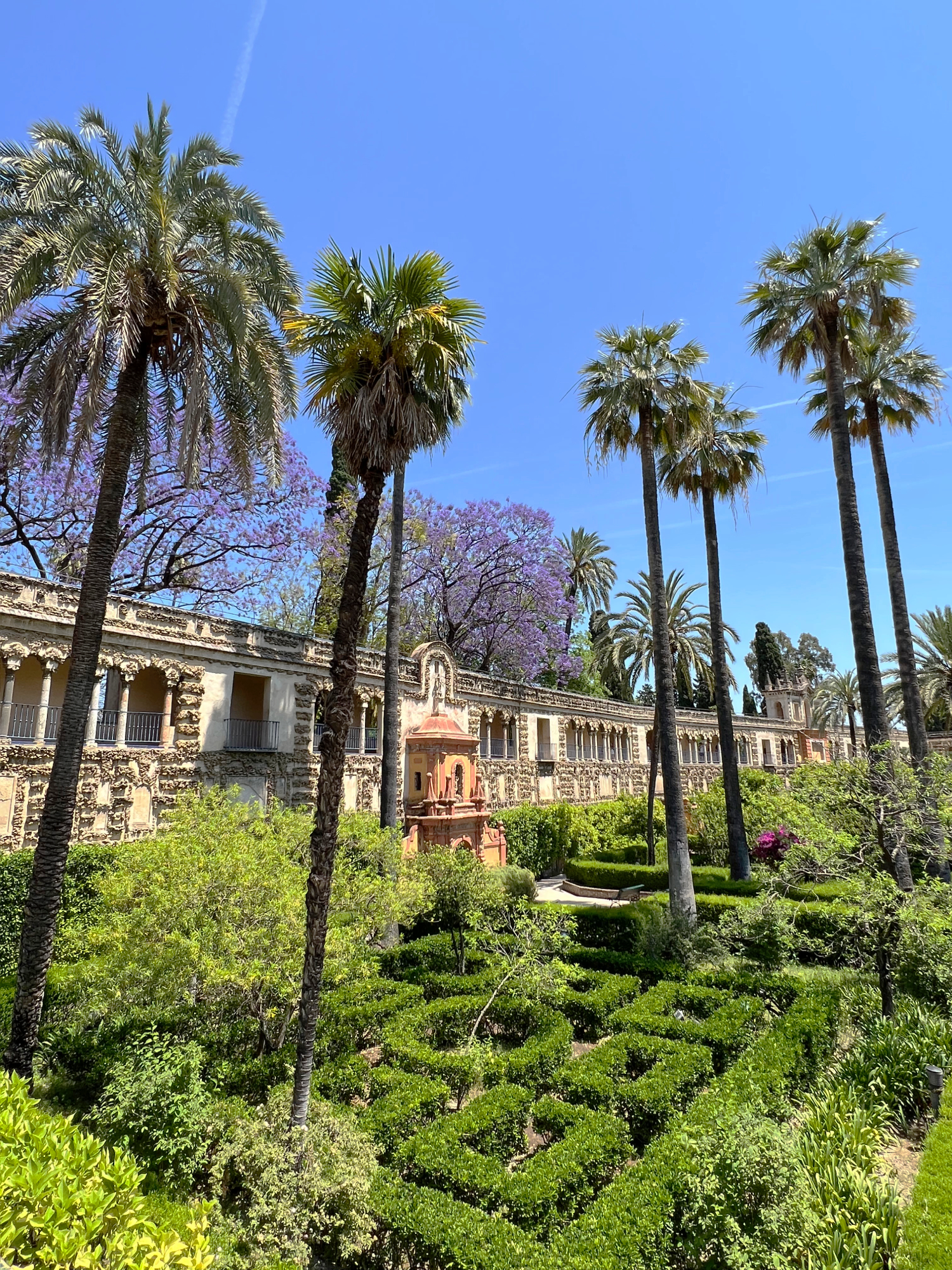
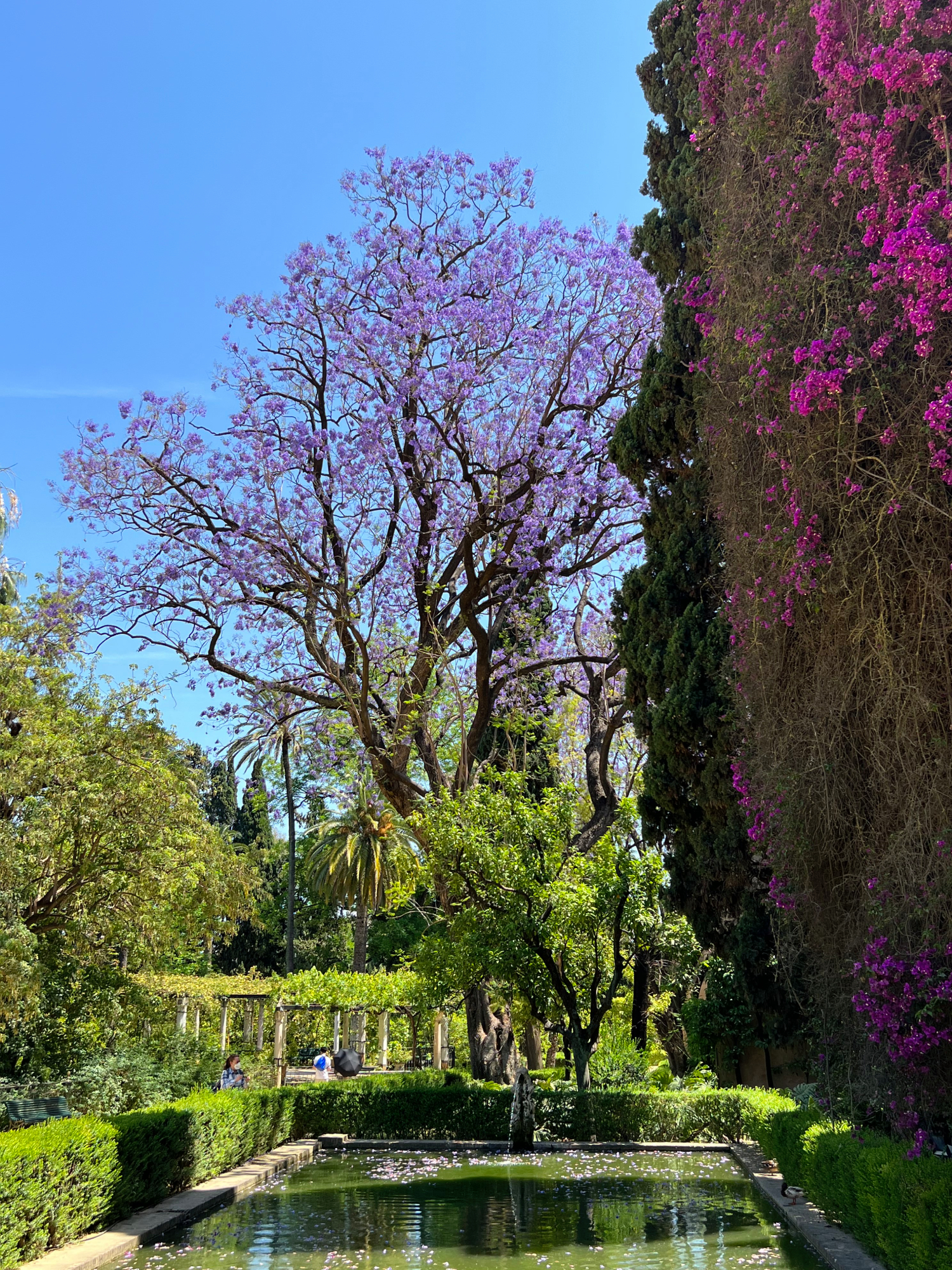
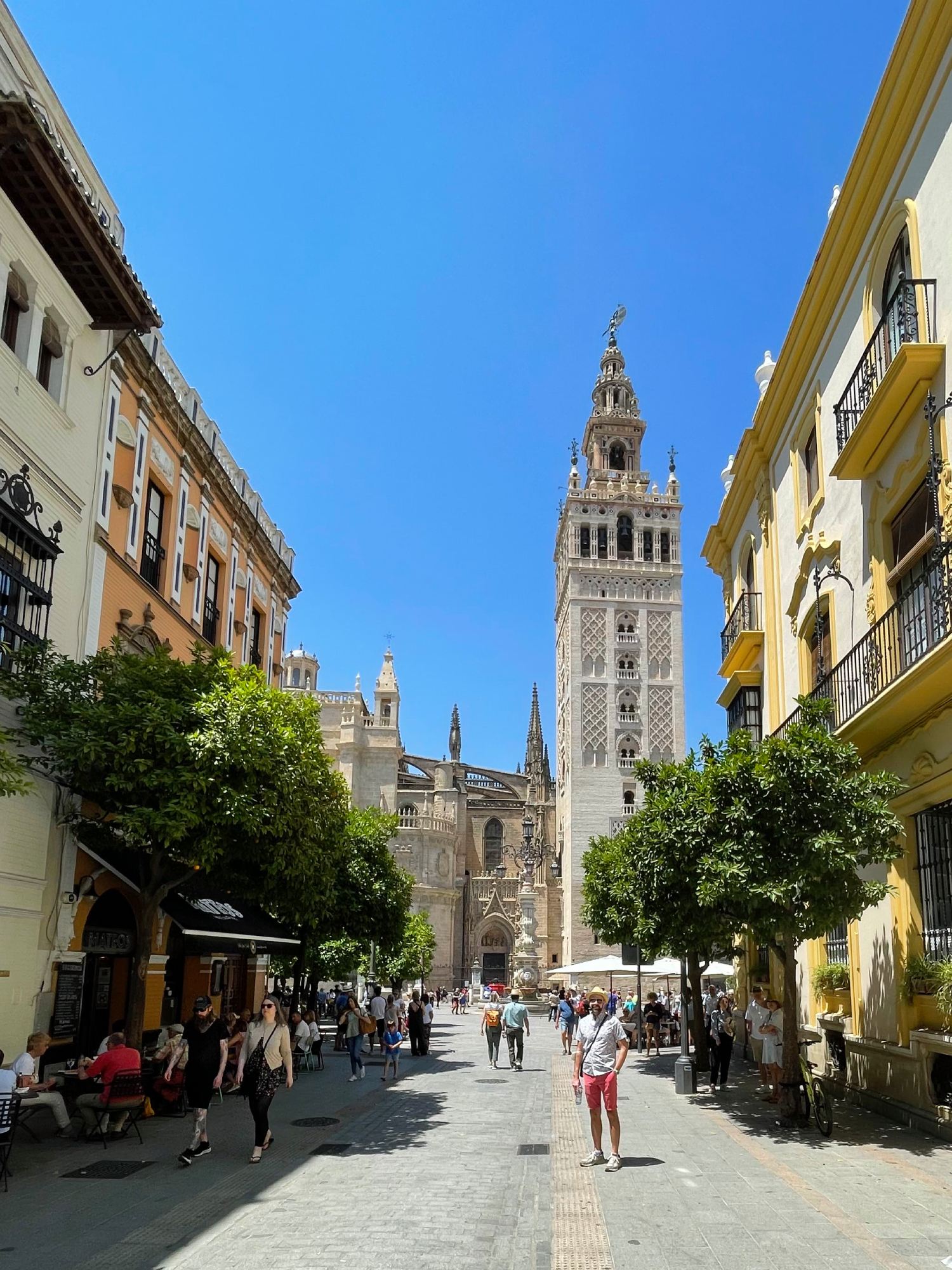
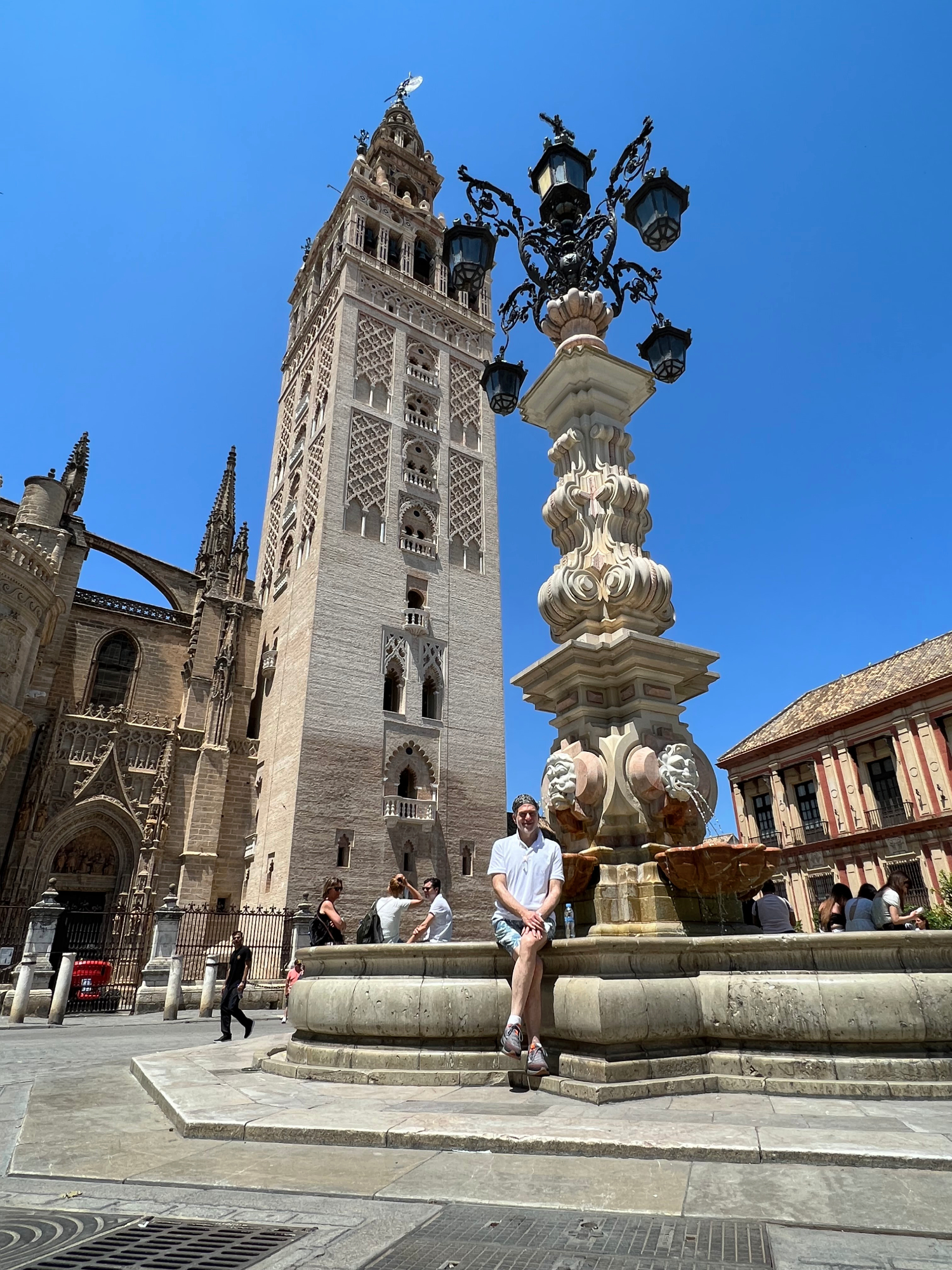
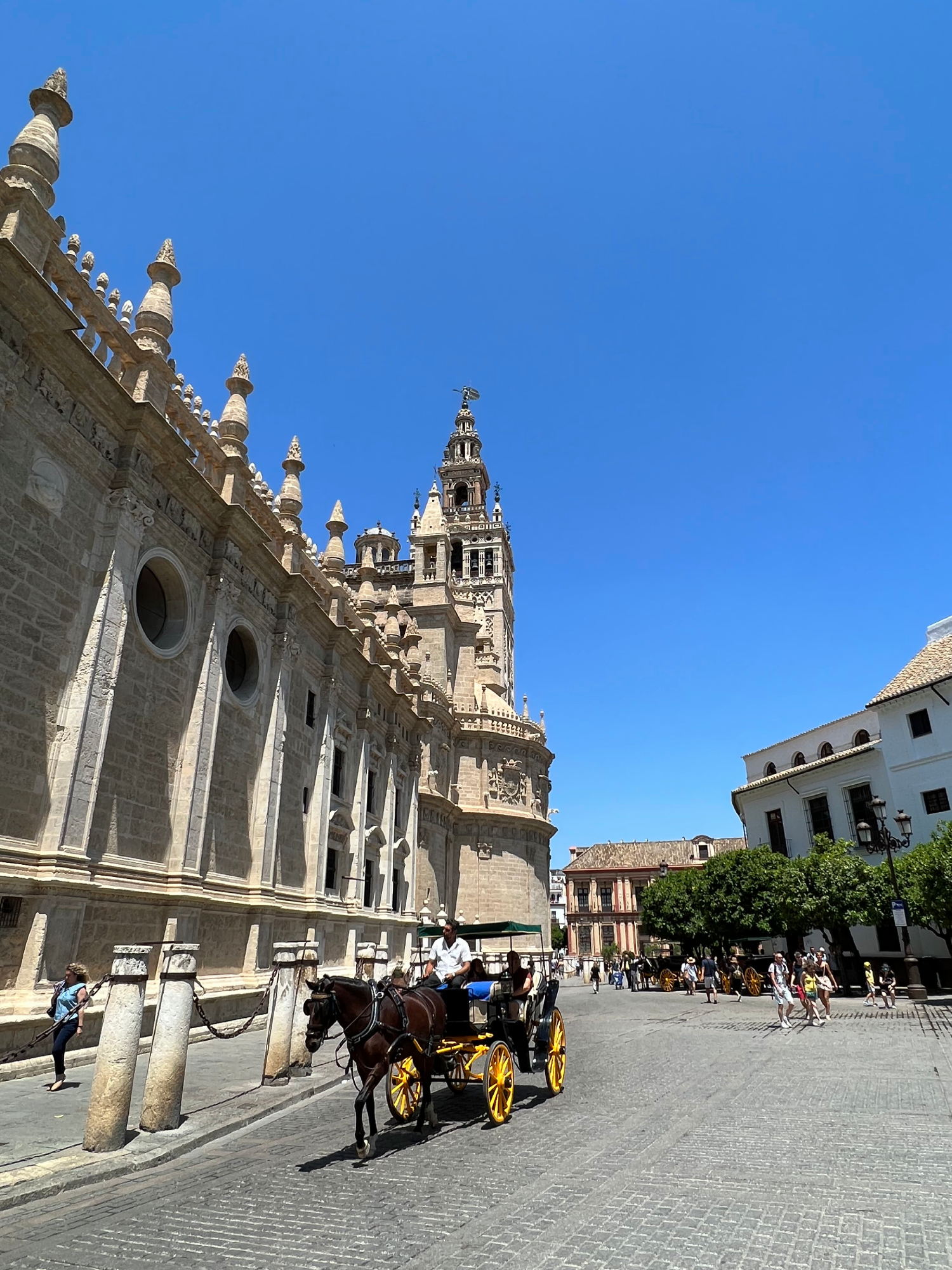

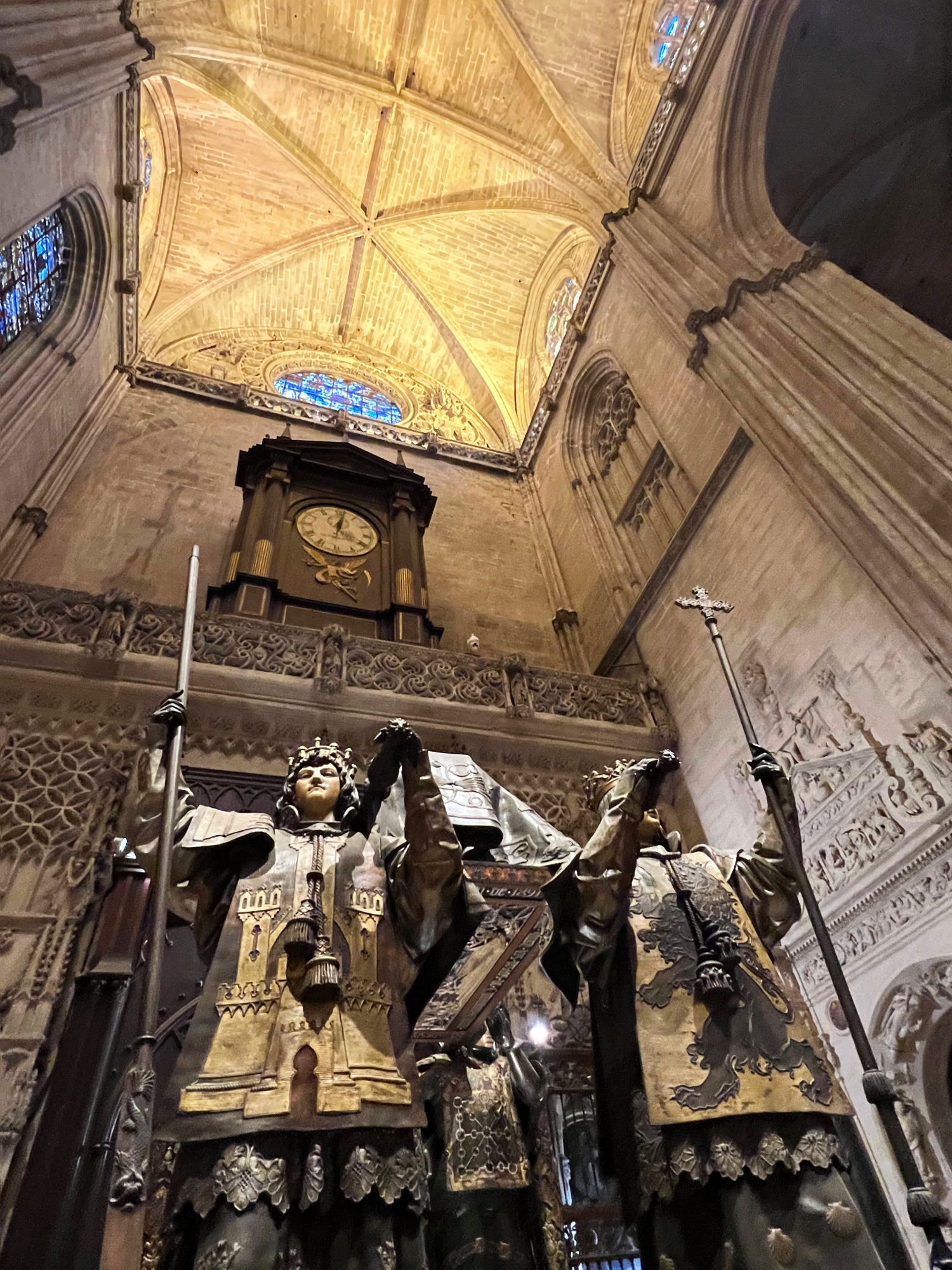
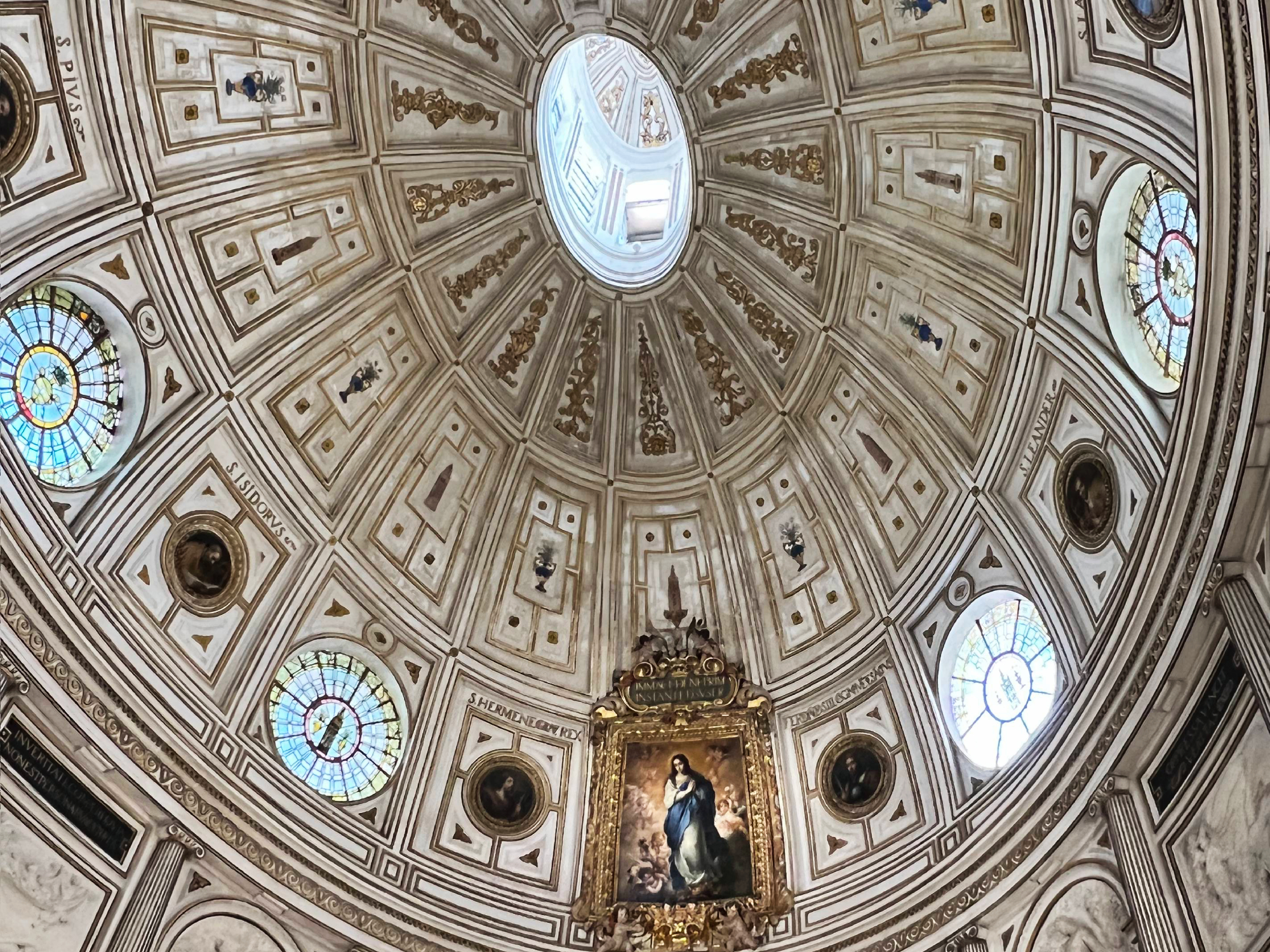

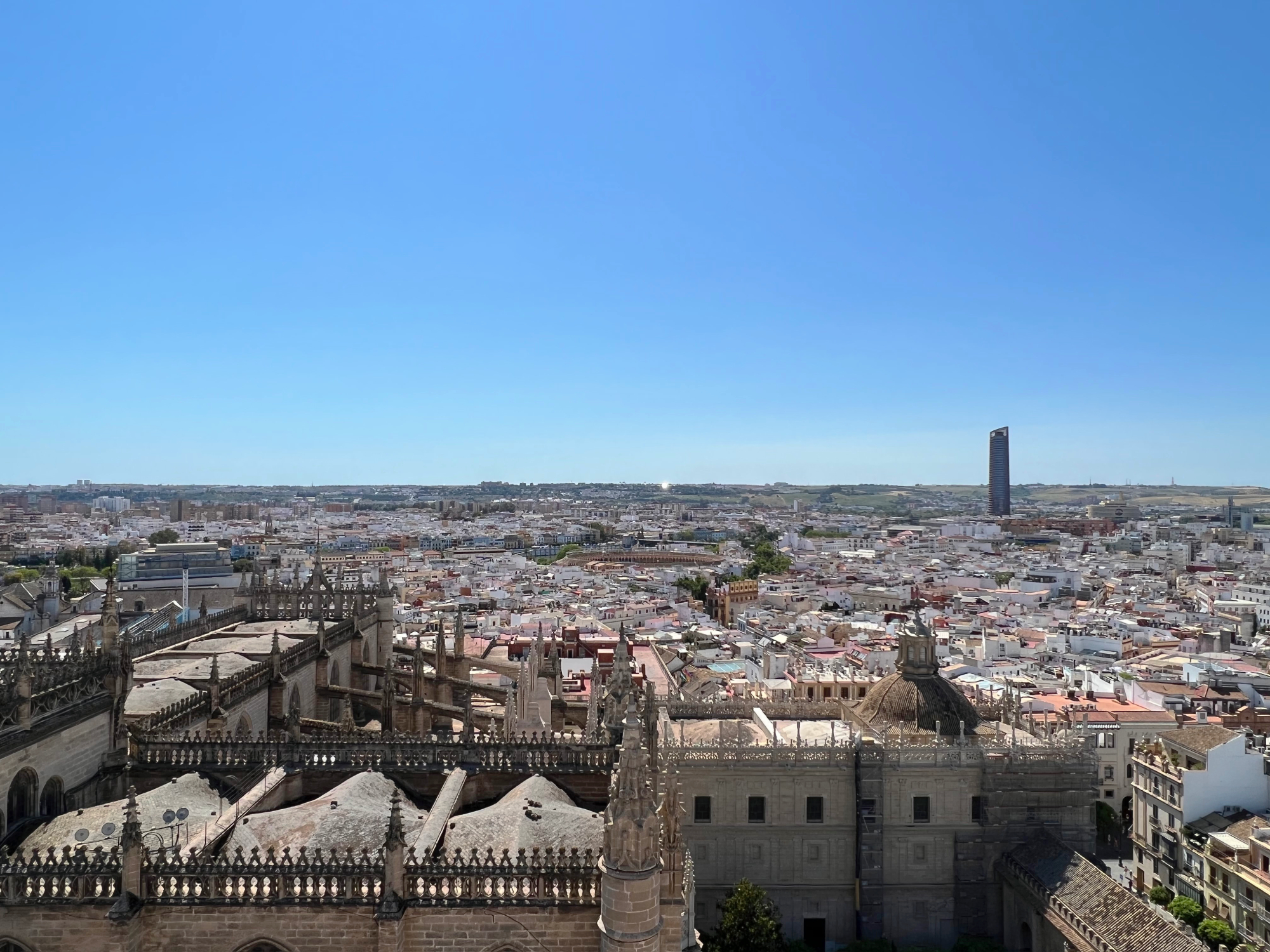
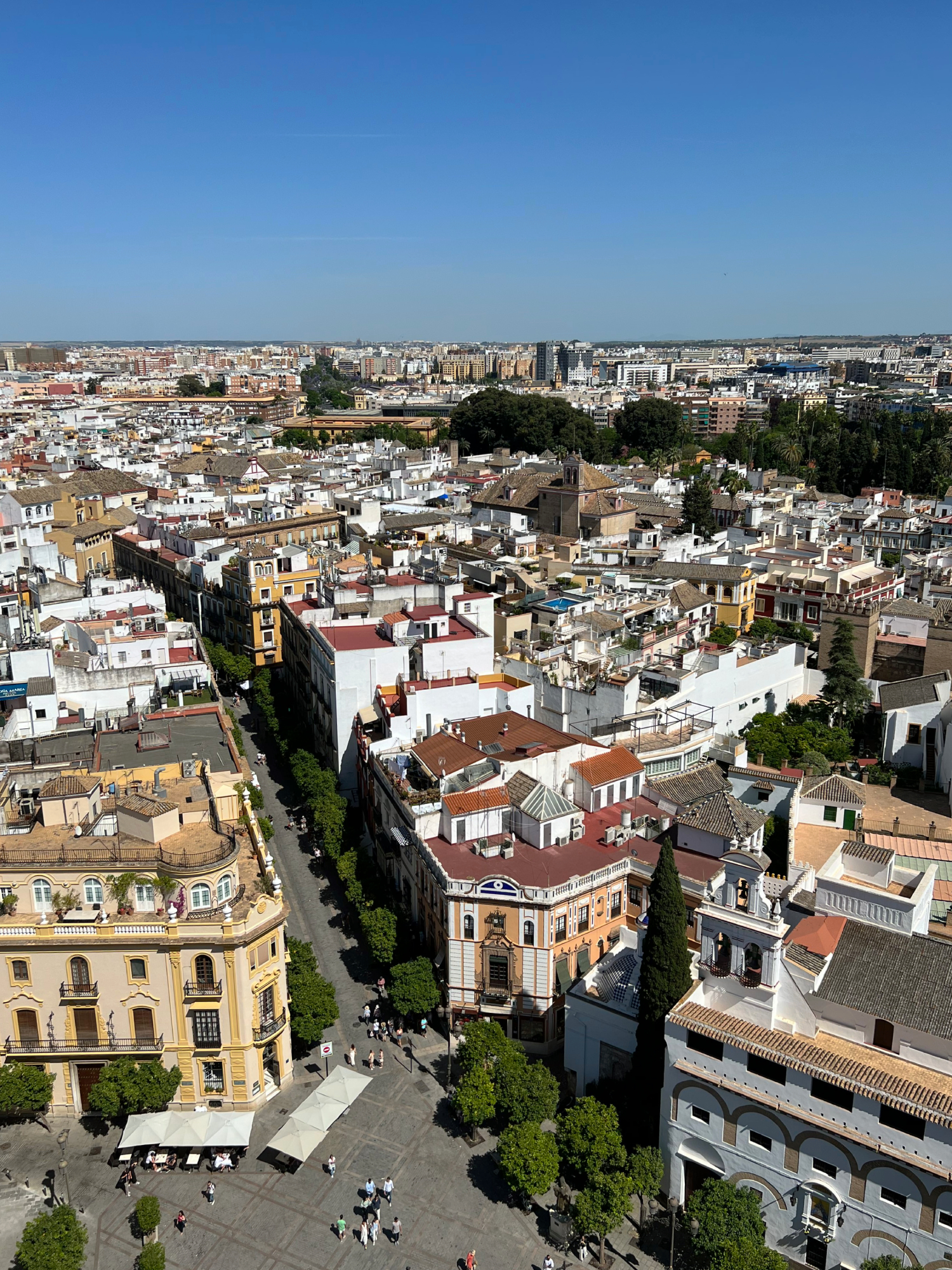
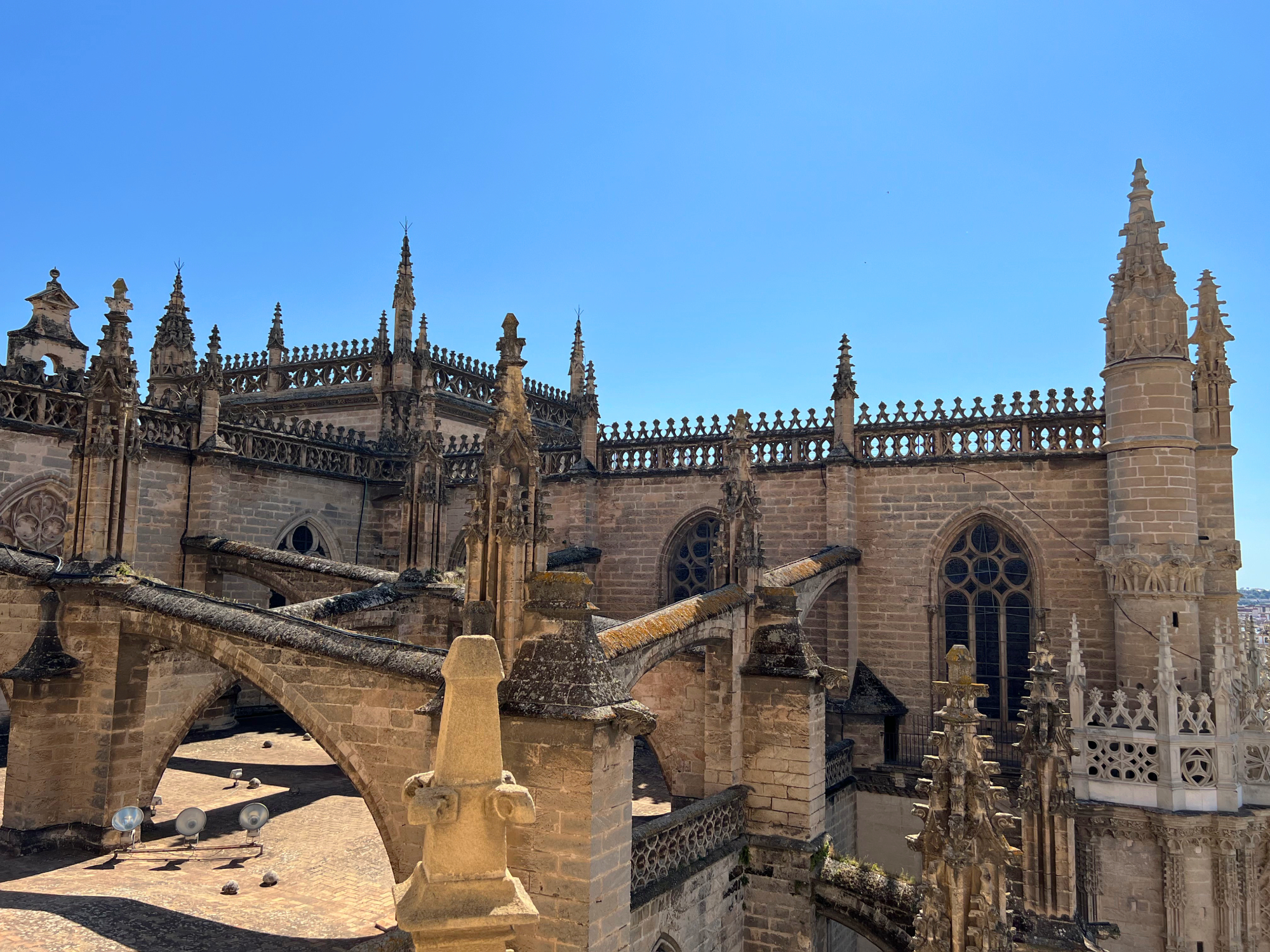
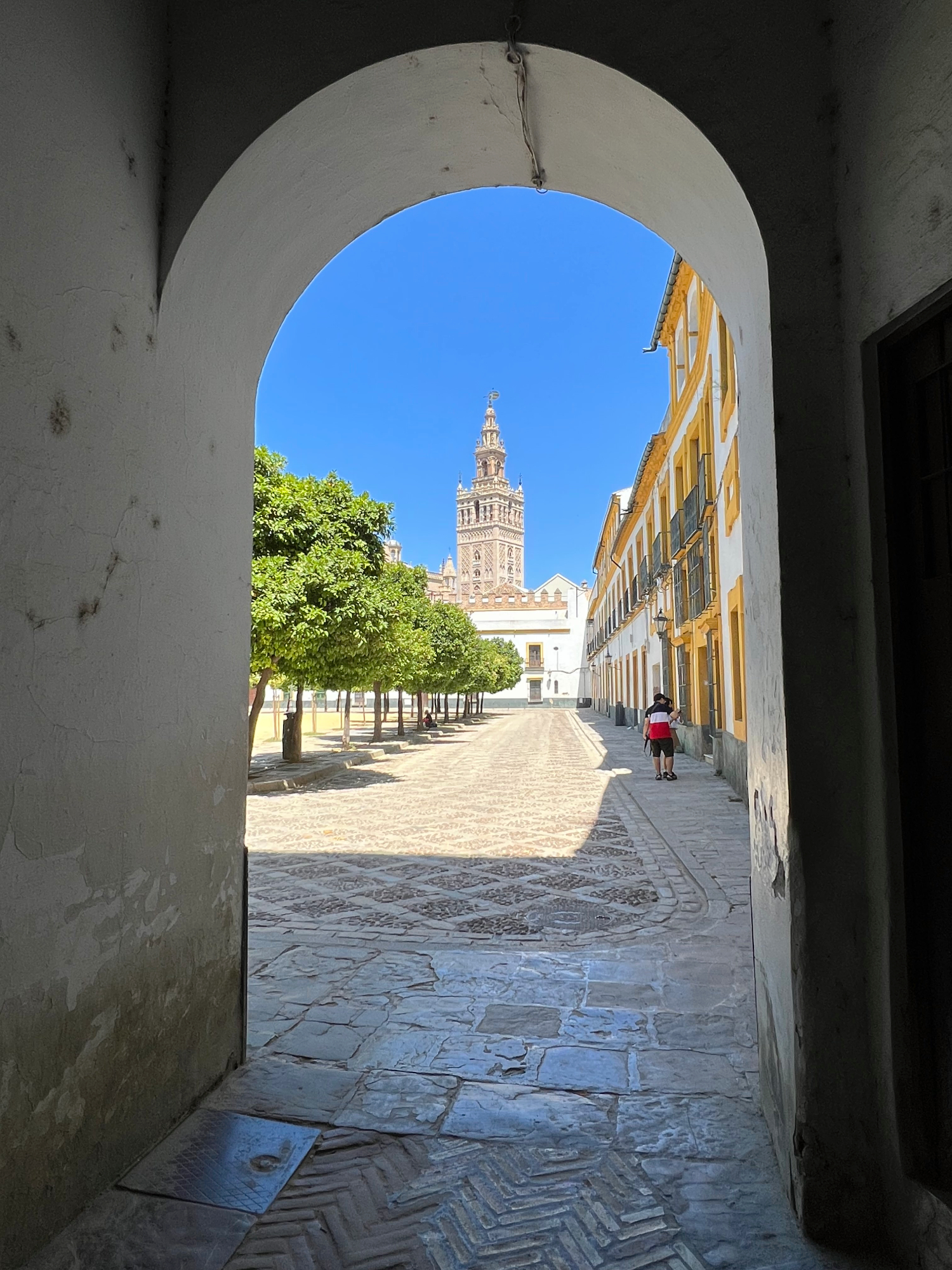
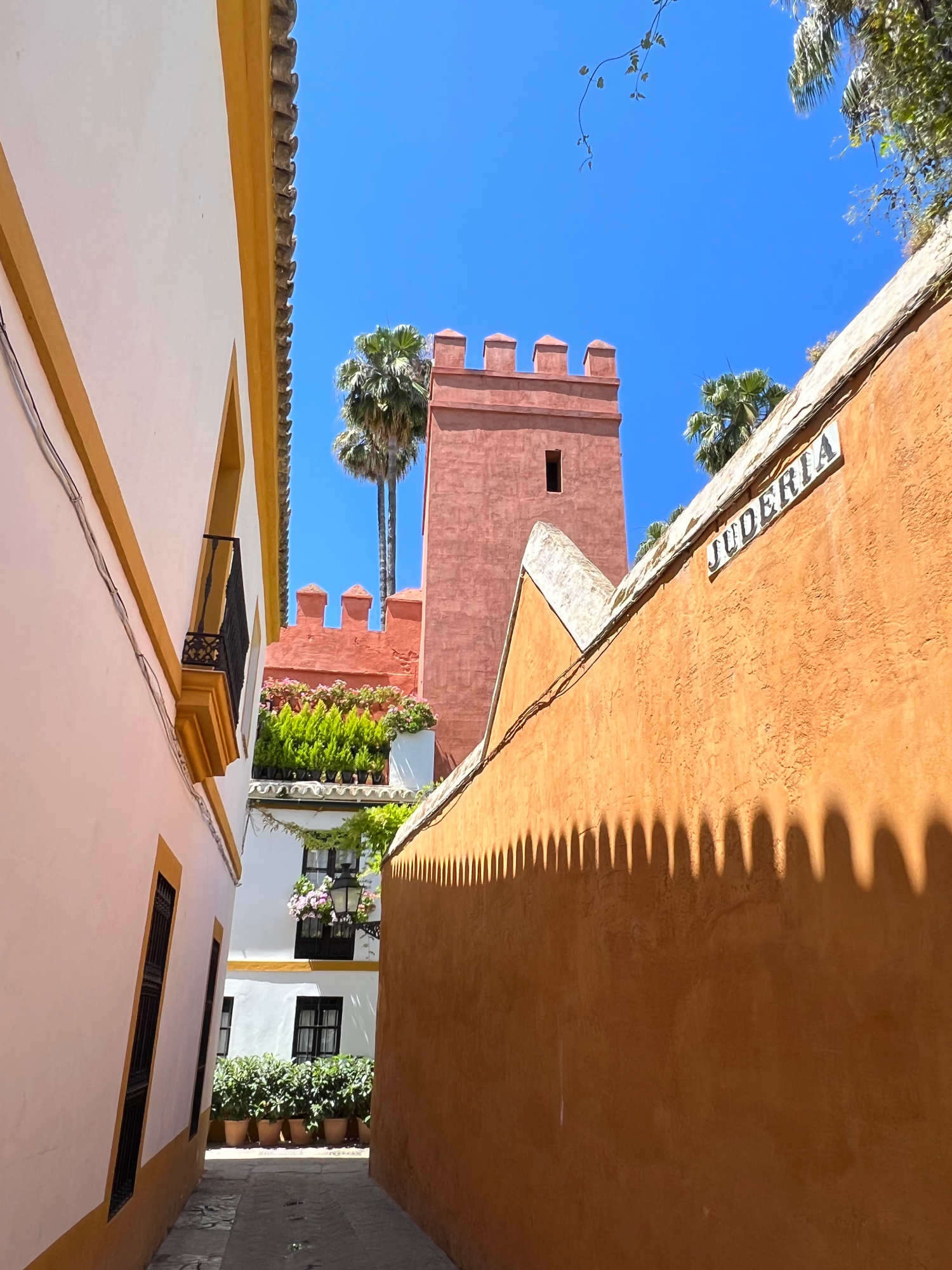
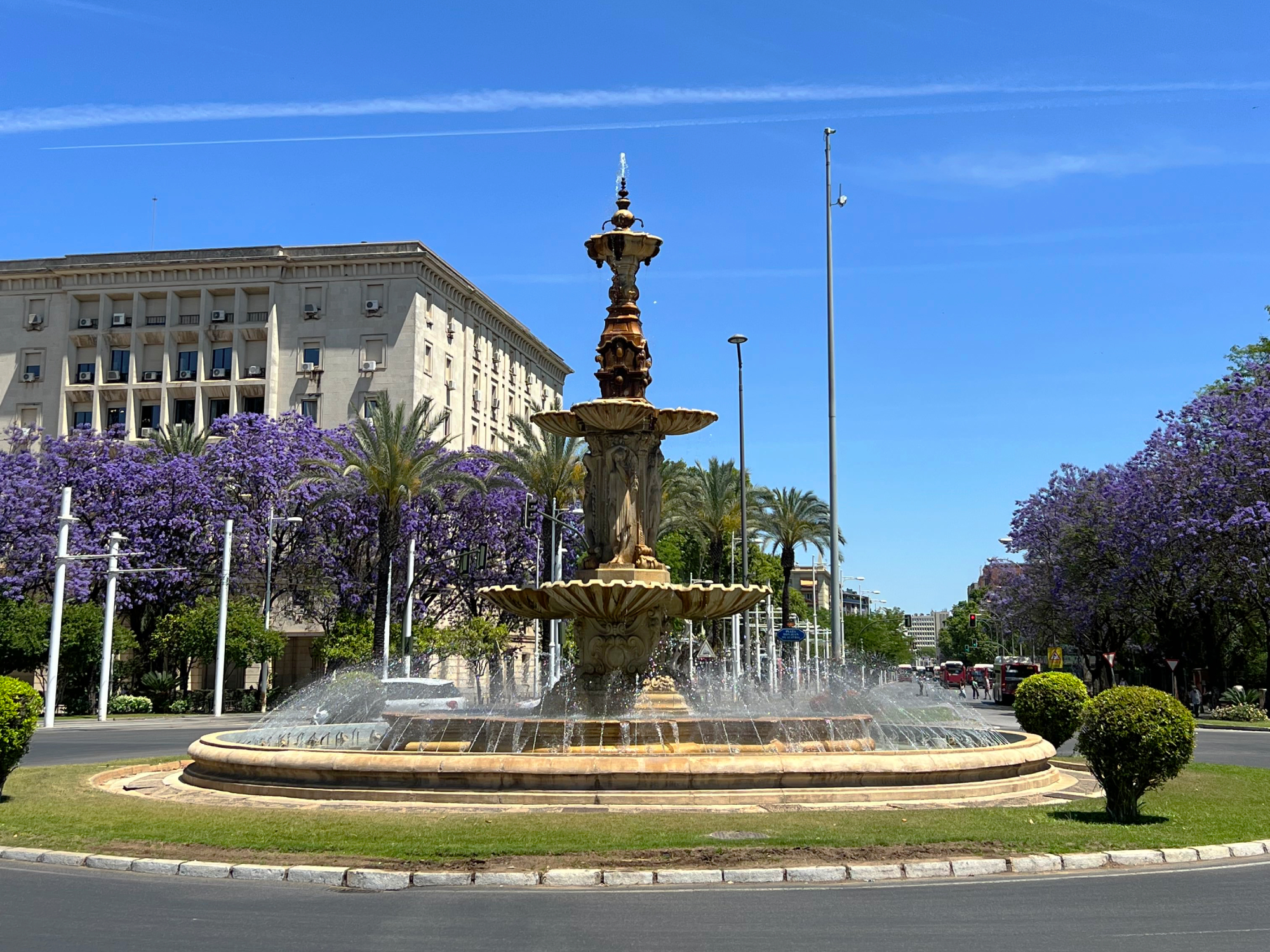
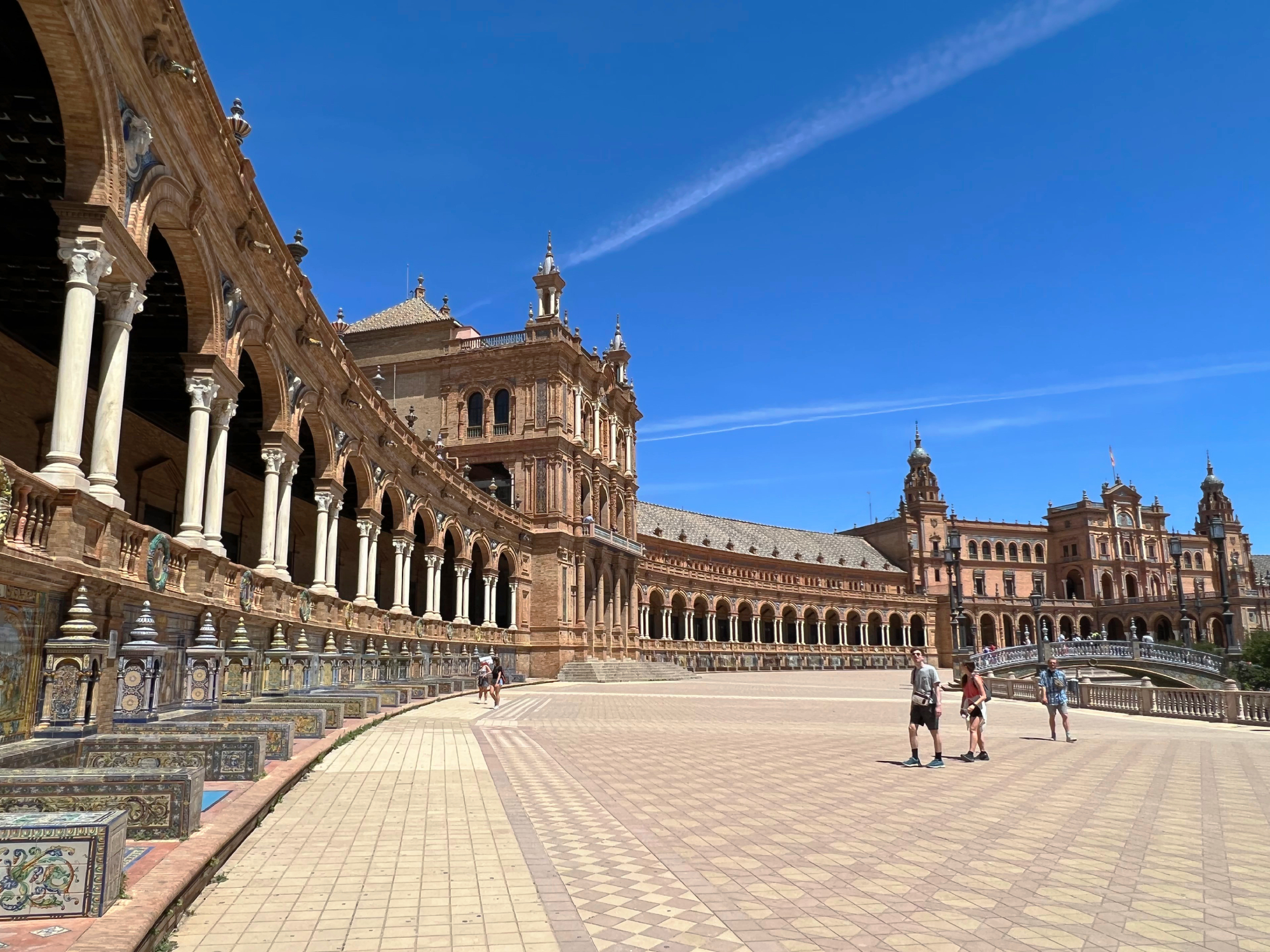
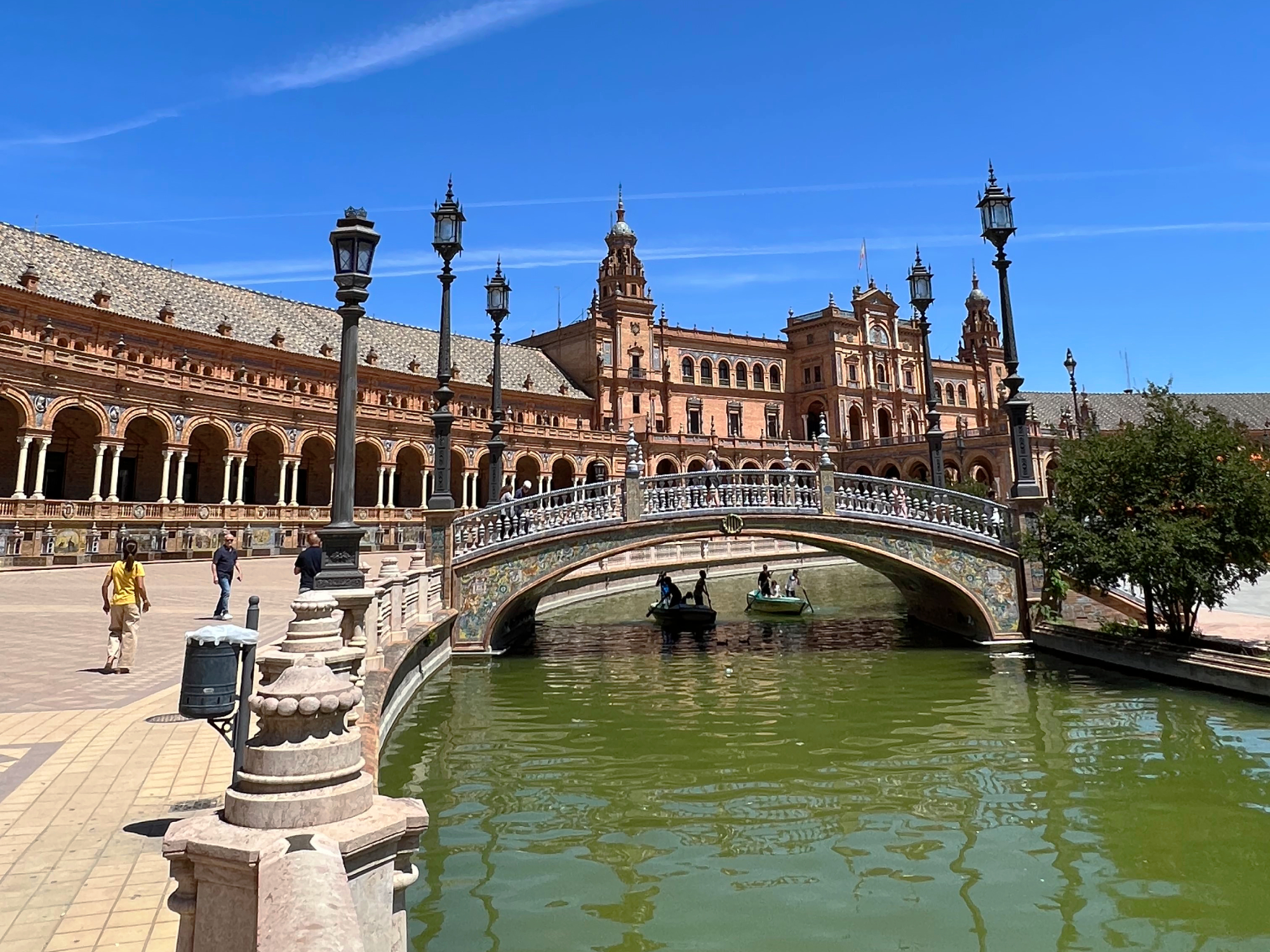
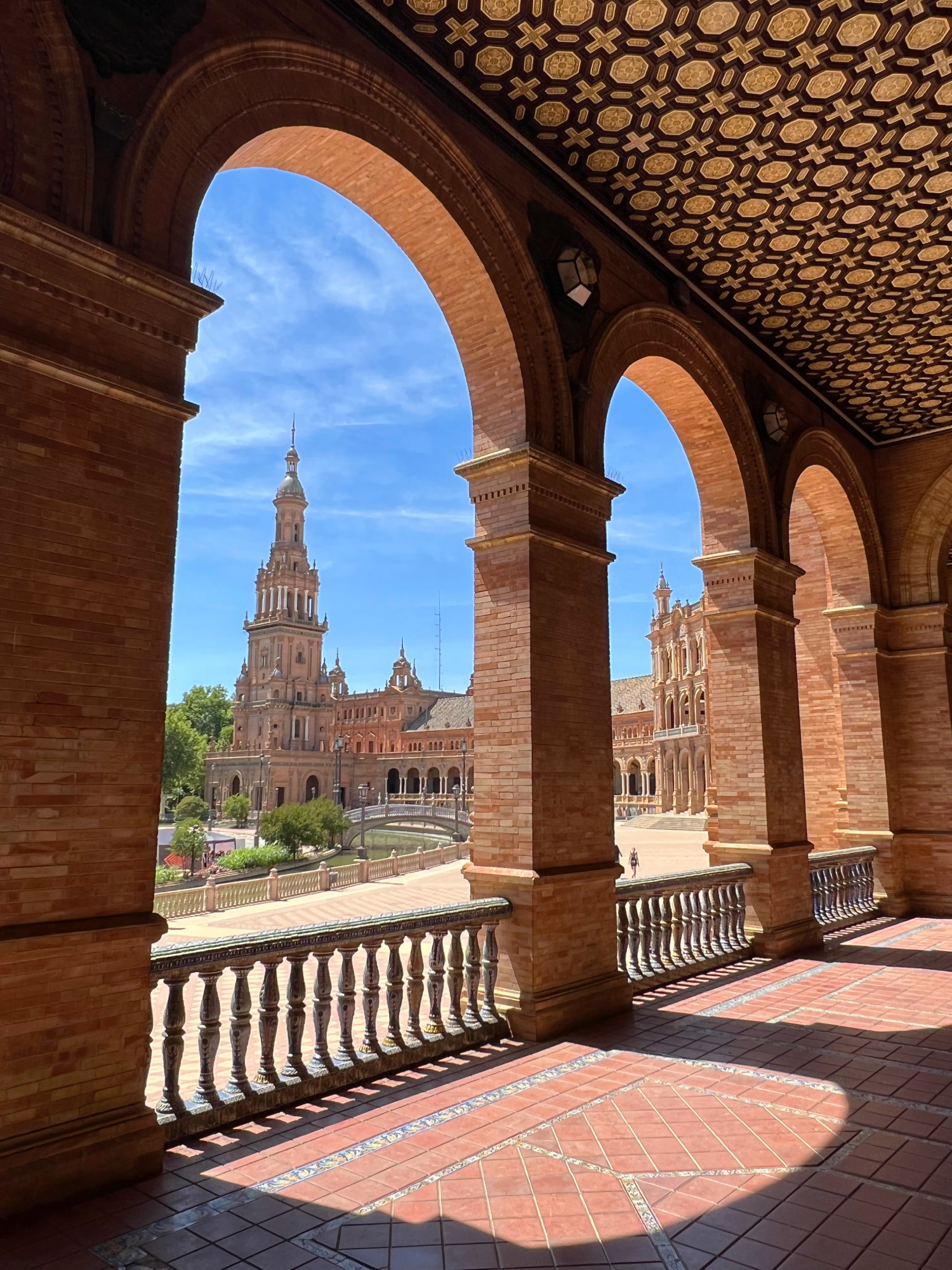
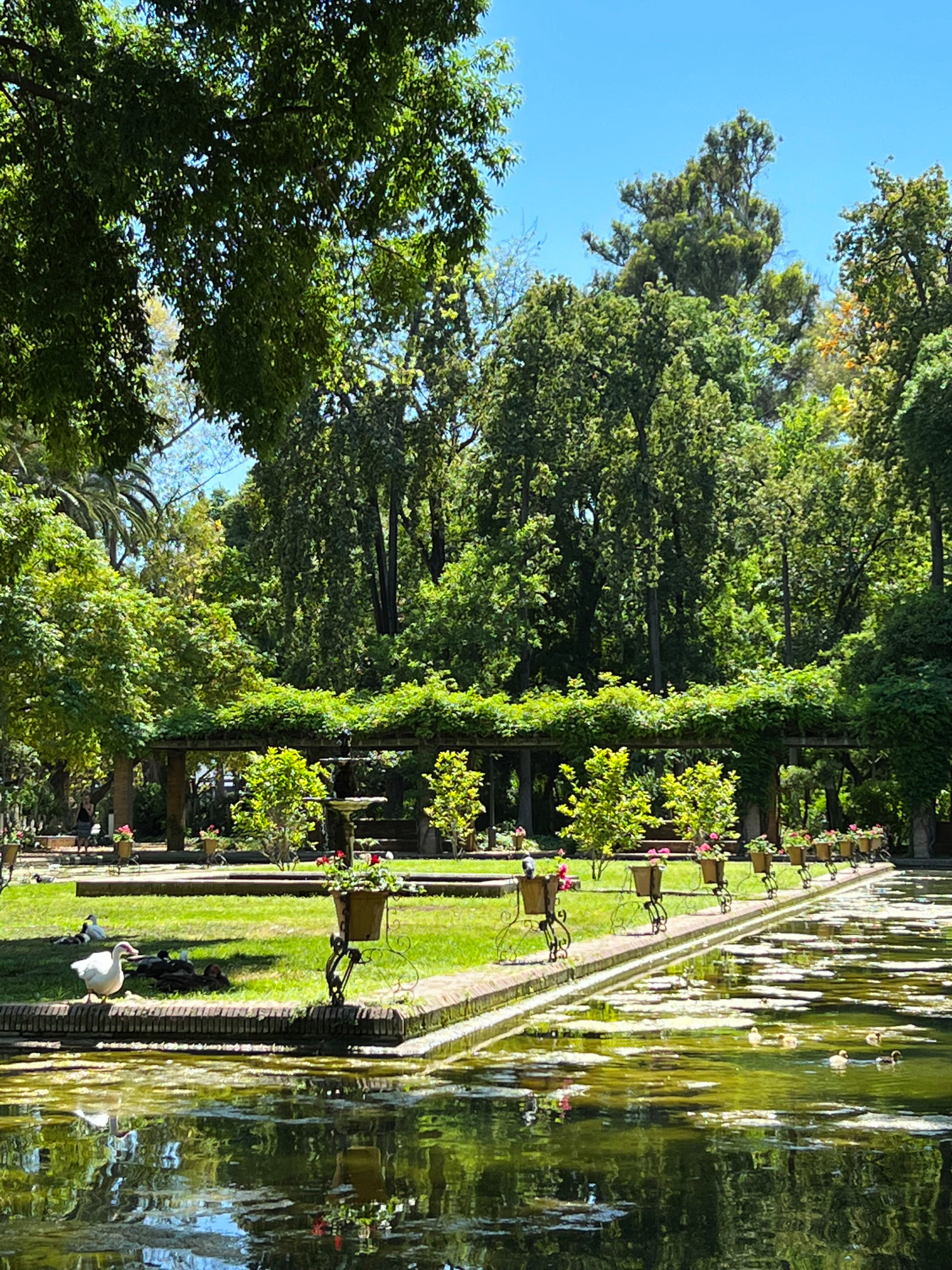
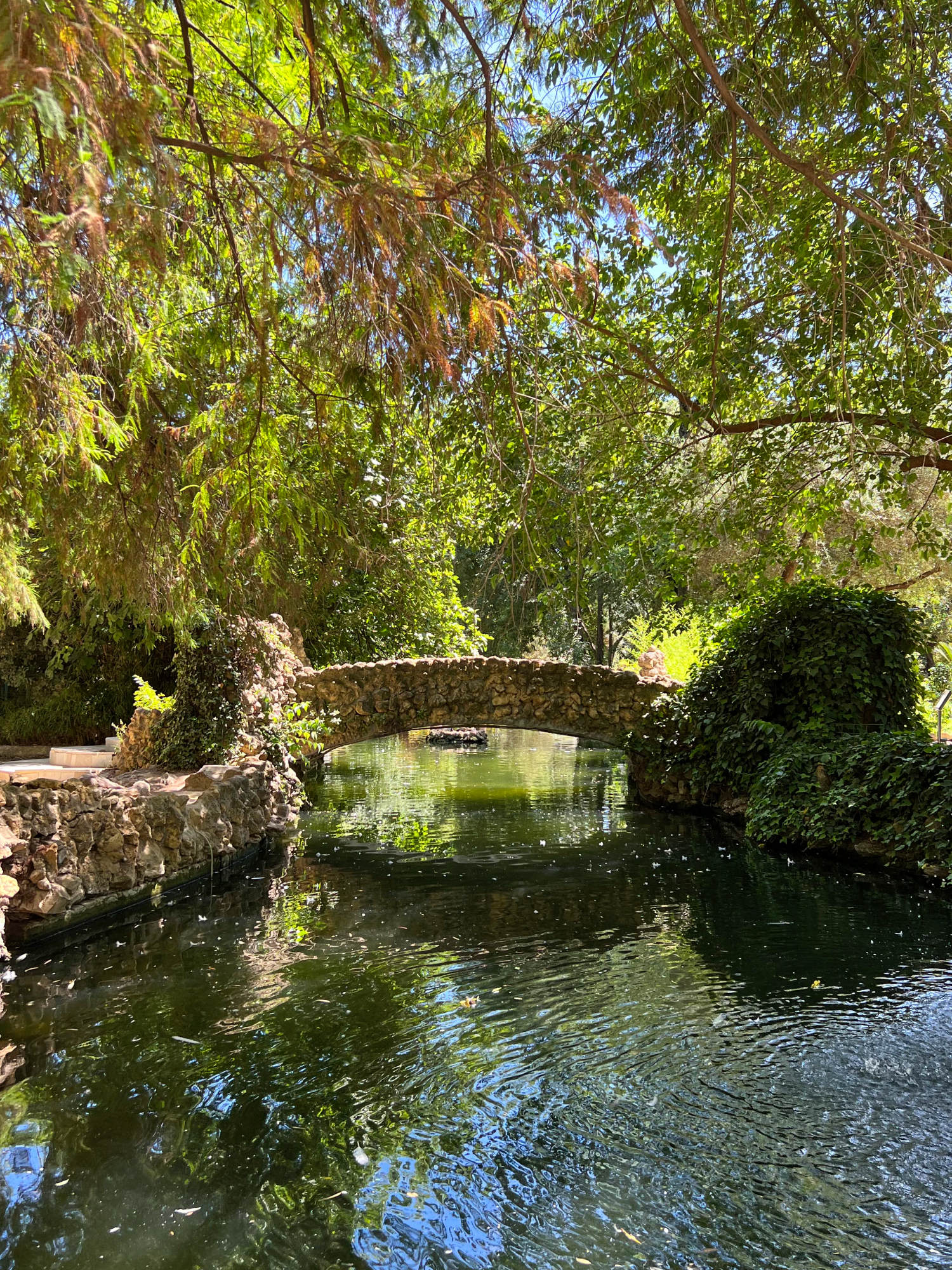
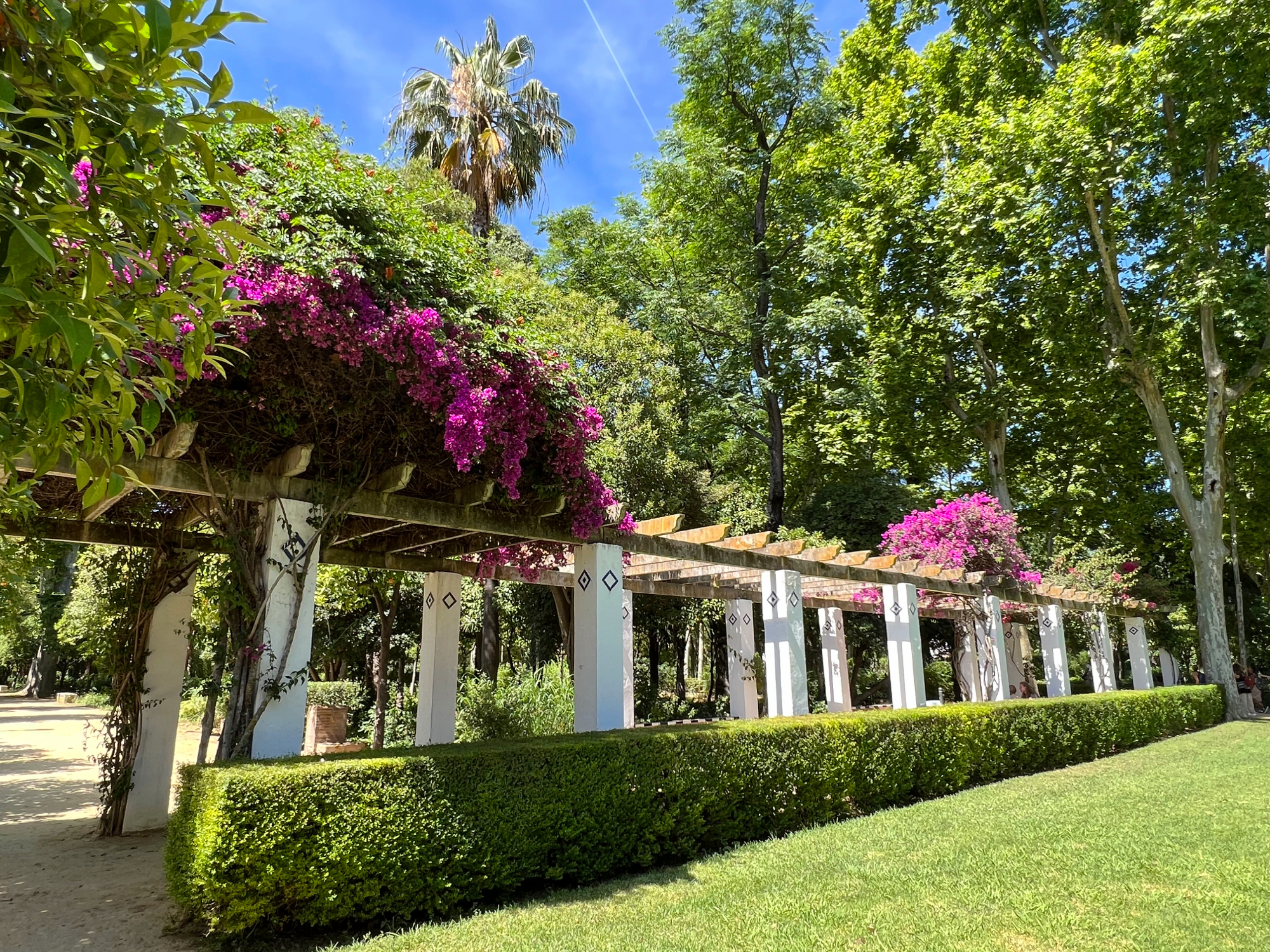
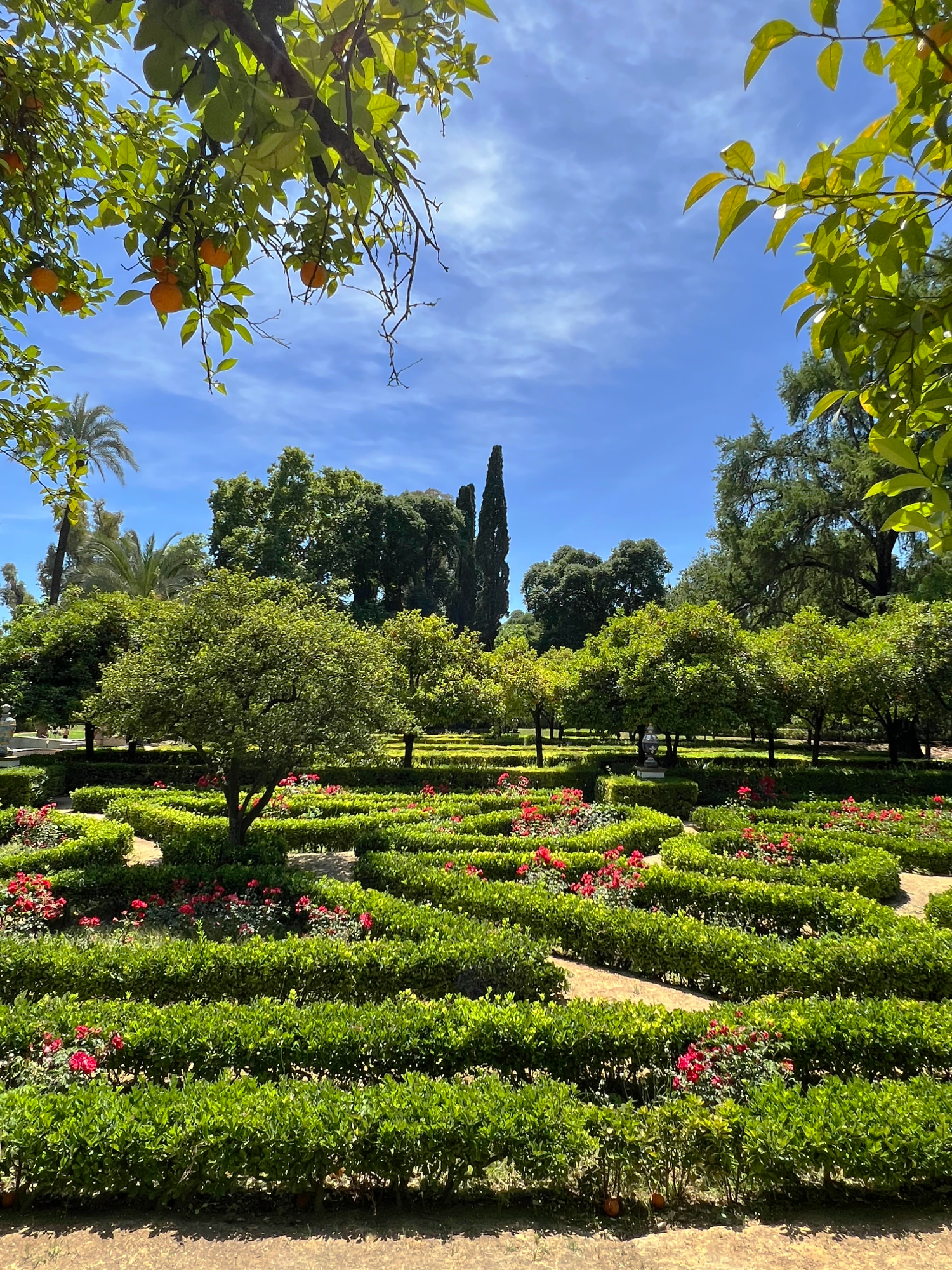
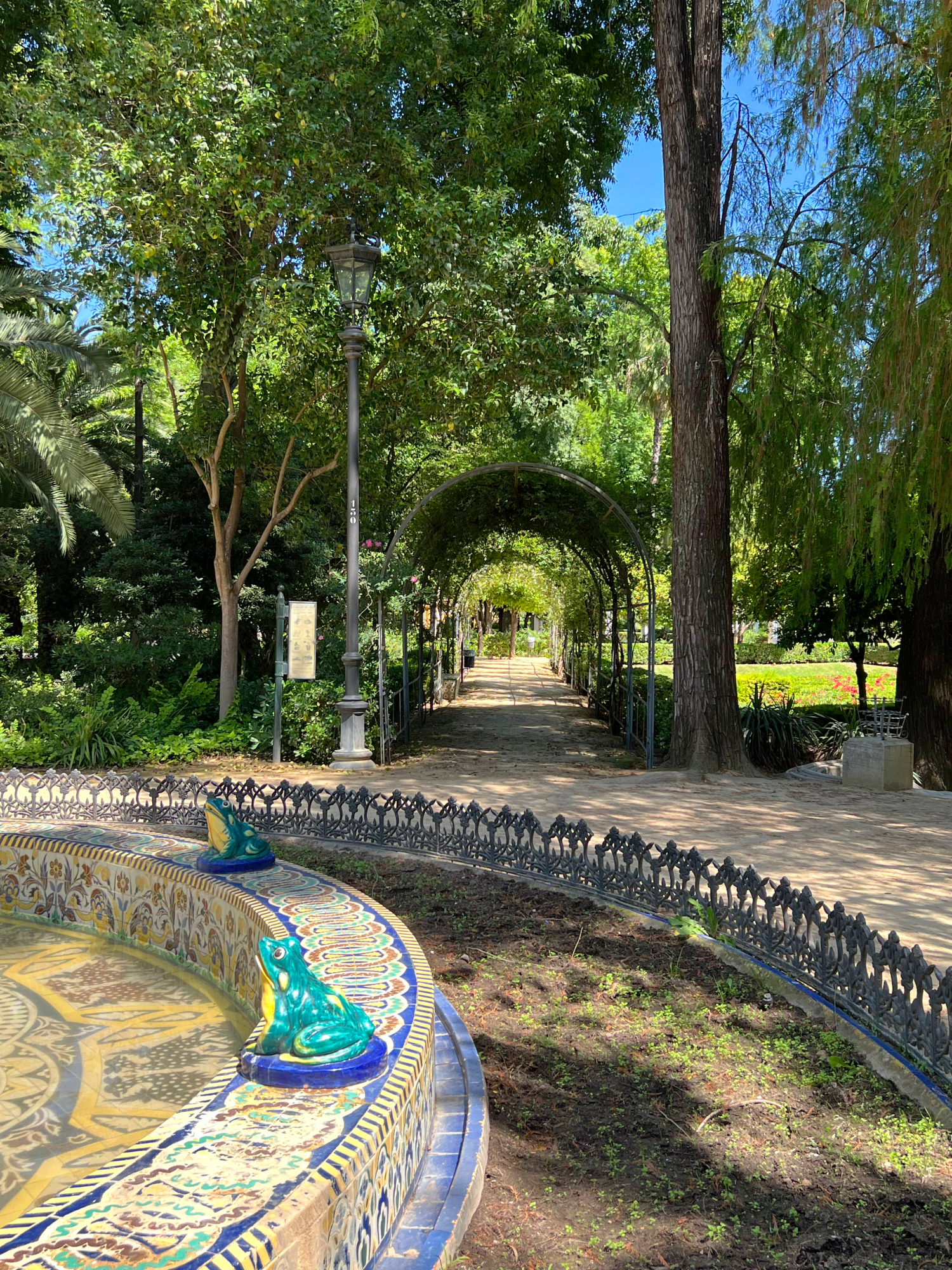
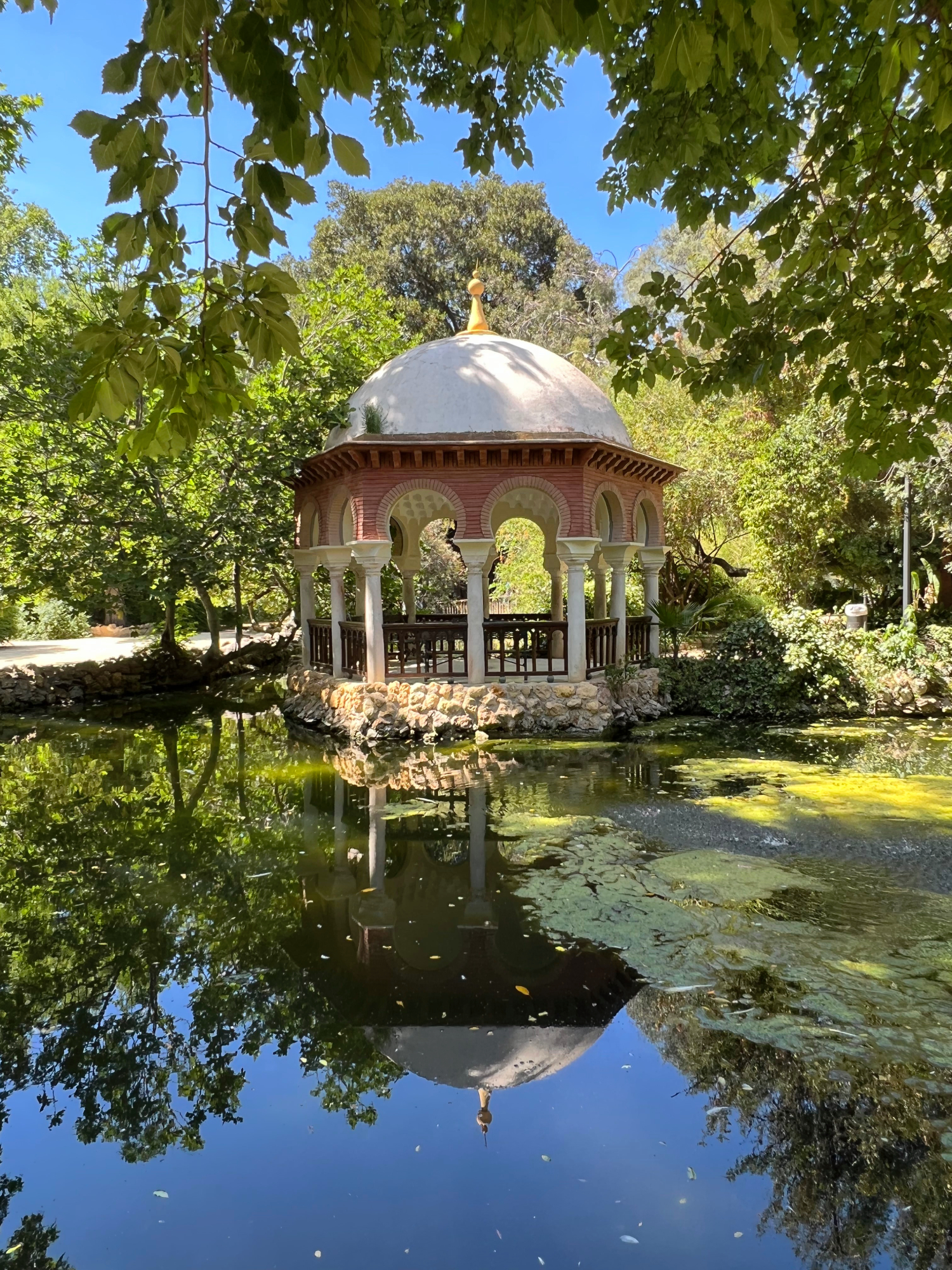
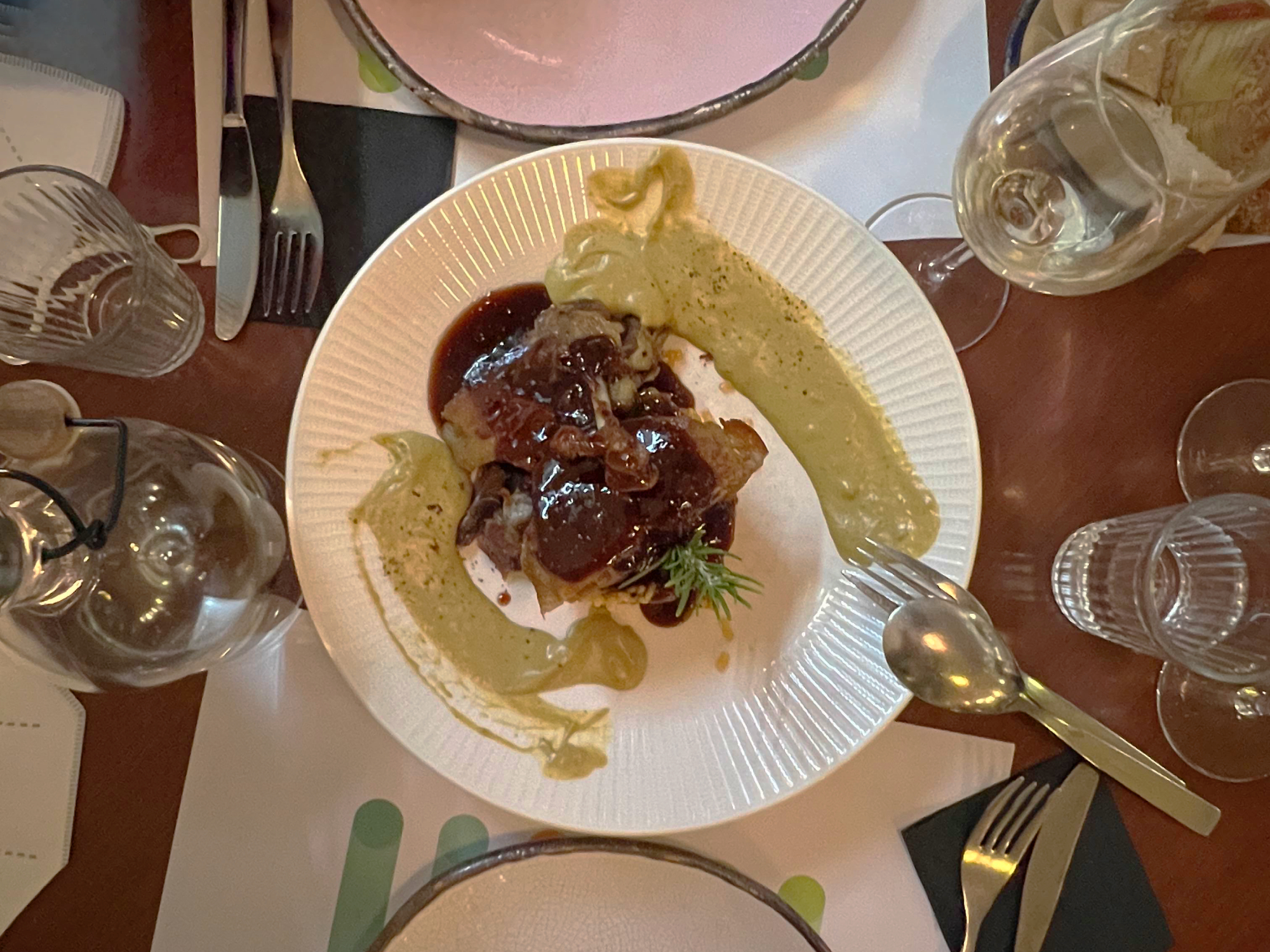
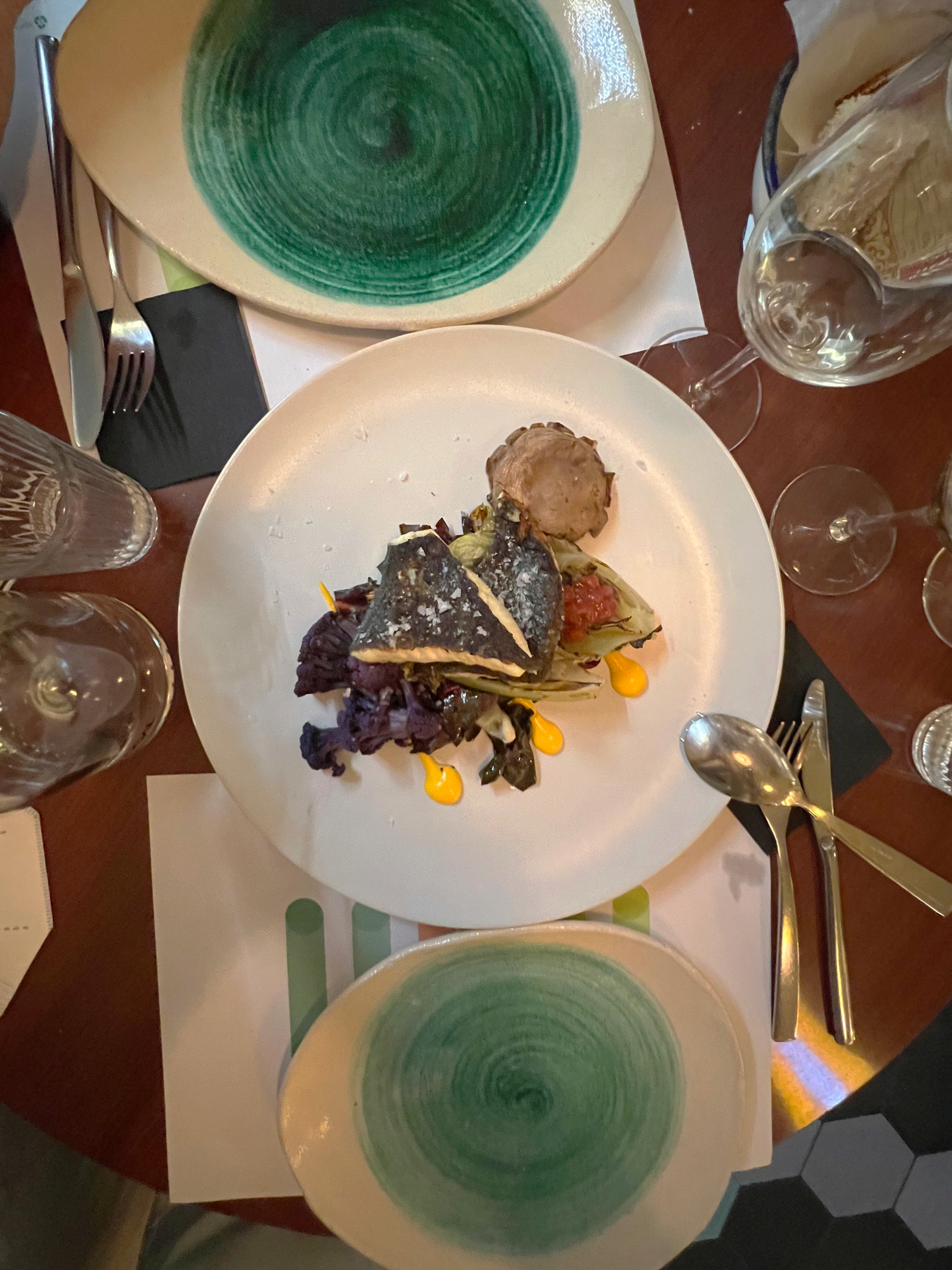
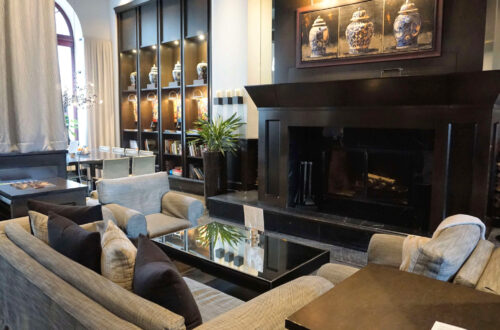
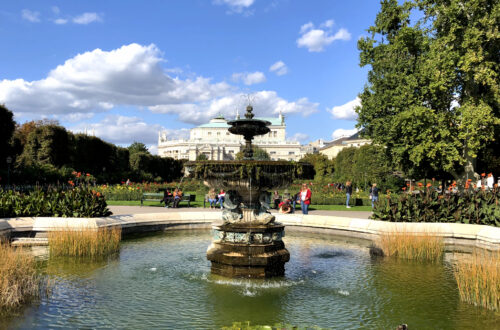
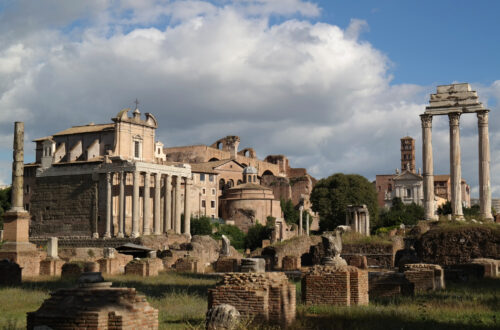
One Comment
Pingback: